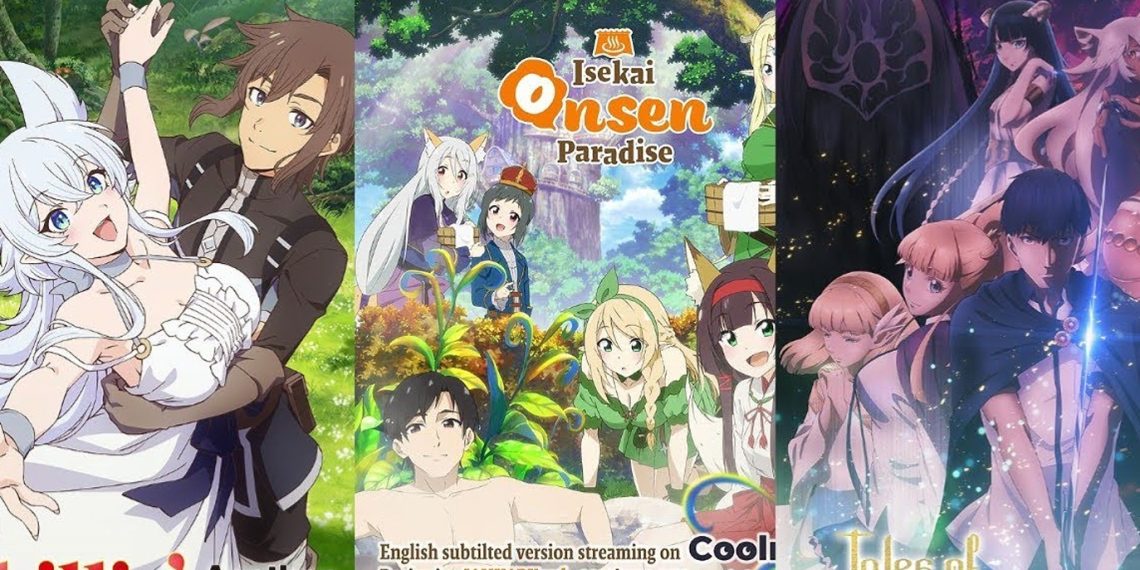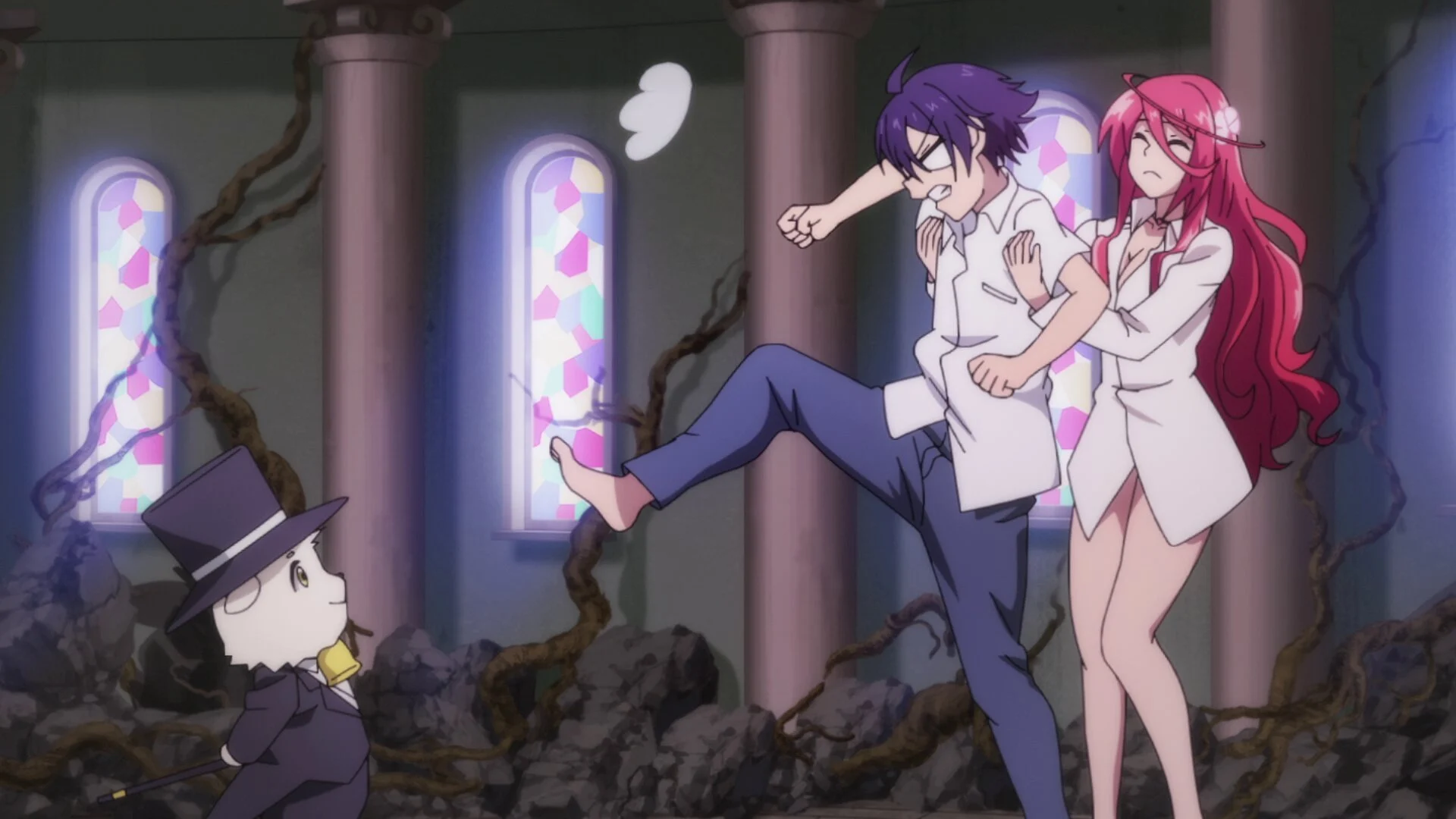Isekai anime are both imaginative and fun, filled with loads of heart. The isekai genre focuses on characters who are transported to other worlds and must find a way to survive while usually completing some kind of mission or quest. This entire premise allows for action, introspection, personal growth, and fantastic animation.
Every year, a good deal of anime falls into the isekai genre, with some going on to become utter classics. The number of anime classics in this genre is too numerous to count. By allowing creators to let their imaginations run wild, the isekai genre becomes fertile land for some of the strongest storytelling in fiction. So, what are the best isekai anime ever?
As Spring 2024 is almost at an end, the season’s isekai anime are well-known properties by this point. Will any of the new series rank among the genre’s best offerings?
20. Hinamatsuri

Hinamatsuri unfolds a delightful comedy centered around Hina, a girl wielding extraordinary powers, who unexpectedly disrupts the life of yakuza fashionista Yoshifumi Nitta. Despite the chaos she brings, Nitta takes her under his wing, leading to a series of comedic escapades.
Set in the real world, Hinamatsuri lacks the fantastical creatures typically found in other anime. Instead, it thrives on absurd and humorous situations. However, the true charm of the show lies in its supporting cast, particularly Anzu, a girl from Hina’s world who also finds herself on Earth, and Hitomi, a classmate of Hina’s with intriguing abilities.
Both characters undergo significant development throughout the series, emerging as the true standouts. While Hina herself remains relatively unchanged, it’s Anzu and Hitomi who steal the spotlight with their growth and antics.
“Hinamatsuri” is a Japanese manga series written and illustrated by Masao Otake. It was serialized in Kadokawa’s “Harta” magazine from 2010 to 2020, spanning 19 volumes. The series was adapted into an anime by studio feel., which aired in 2018.
“Hinamatsuri” combines elements of science fiction, comedy, and slice of life, delivering a unique and engaging narrative that balances humor with emotional depth. The story revolves around the unexpected arrival of a mysterious girl with telekinetic powers and her impact on the life of a yakuza member.
The story begins with Yoshifumi Nitta, a mid-level yakuza member living a relatively comfortable life. One day, a strange, egg-shaped object falls into his apartment, and out emerges Hina, a young girl with incredible telekinetic abilities.
Despite her immense power, Hina is socially inept and emotionally detached. Nitta reluctantly takes her in, and the series follows their comedic and heartwarming interactions as they navigate their unconventional living arrangement.
As Hina adjusts to her new life, she starts attending school and attempting to blend in with society. Meanwhile, Nitta finds himself grappling with the challenges of raising a superpowered teenager while balancing his yakuza responsibilities.
The series expands its focus to include other characters such as Anzu, another girl with telekinetic powers, and Hitomi, Hina’s classmate who becomes entangled in various misadventures. Through its episodic structure, “Hinamatsuri” explores the characters’ growth, relationships, and the humorous situations they find themselves in.
One of the central themes of “Hinamatsuri” is the concept of found family. Nitta and Hina, initially strangers, develop a deep bond that resembles a father-daughter relationship.
Their dynamic highlights the idea that family is not necessarily defined by blood, but by the connections and care shared between individuals. This theme is further explored through the interactions between other characters, such as Anzu and her surrogate family.
The series showcases the characters’ adaptation to their changing circumstances and their personal growth. Hina learns to navigate human emotions and social norms, while Nitta evolves from a self-centered yakuza member to a caring guardian. Anzu’s journey from a homeless girl to a productive member of society underscores the importance of resilience and adaptability.
“Hinamatsuri” excels in its comedic timing and absurd scenarios. The juxtaposition of Hina’s extraordinary powers with everyday situations creates a rich source of humor. The series masterfully balances slapstick comedy with situational and character-driven humor, keeping the audience entertained while also delivering poignant moments.

At its heart, “Hinamatsuri” is about human connection. The characters’ interactions and relationships drive the narrative, highlighting the importance of empathy, kindness, and understanding. The series explores how these connections can lead to personal growth and create a sense of belonging.
Yoshifumi Nitta: Nitta is a yakuza member who finds his life turned upside down by Hina’s arrival. Initially reluctant to take on a parental role, Nitta gradually becomes a caring and responsible guardian. His character arc is marked by his transformation from a self-serving gangster to a more compassionate individual.
Hina: Hina is a young girl with immense telekinetic powers. Her initial lack of social skills and emotional detachment create many comedic situations, but as the series progresses, she learns to connect with others and understand her own emotions. Hina’s growth is central to the series’ narrative.
Anzu: Anzu is another girl with telekinetic abilities who arrives after Hina. Unlike Hina, Anzu starts off as an antagonist but eventually becomes one of the most endearing characters. Her journey from homelessness to finding a family and purpose is one of the most emotionally impactful arcs in the series.
Hitomi Mishima: Hitomi is Hina’s classmate who becomes inadvertently involved in various adult situations, often leading to comedic outcomes. Despite her young age, Hitomi’s unexpected rise to a professional bartender and her ability to navigate adult environments provide much of the series’ humor.
Mao: Mao is another superpowered girl who gets stranded on a deserted island before eventually making her way to Japan. Her storyline intersects with the main cast, adding another layer to the series’ exploration of superpowered individuals adapting to ordinary life.
Masao Otake’s art style in “Hinamatsuri” is distinctive and complements the series’ tone perfectly. The character designs are expressive, effectively conveying the comedic and emotional nuances of the story.
The backgrounds and settings are detailed, grounding the supernatural elements in a realistic world. The anime adaptation by studio feel. retains the manga’s charm, with fluid animation and vibrant colors that enhance the comedic and dramatic moments.
“Hinamatsuri” has been praised for its unique blend of humor, heart, and character development. The series’ ability to balance absurd comedy with genuine emotional moments has resonated with audiences. Critics have lauded its storytelling, character arcs, and the seamless integration of science fiction elements into a slice-of-life narrative.
The anime adaptation received positive reviews for its faithful representation of the manga’s spirit and its high-quality animation. Fans of the series appreciate the way it handles its diverse cast of characters, each with their own distinct personalities and growth trajectories.
“Hinamatsuri” is a delightful and multifaceted series that offers a fresh take on the slice-of-life genre with its incorporation of science fiction elements.
Through its engaging characters, well-crafted humor, and poignant themes, the series explores the nuances of found family, personal growth, and human connection. Masao Otake’s storytelling and art, combined with the anime adaptation’s quality, make “Hinamatsuri” a must-read and must-watch for fans of comedy and heartfelt narratives.
The series’ ability to evoke laughter and tears in equal measure is a testament to its depth and charm. Whether you are drawn to its humorous scenarios, touching character relationships, or the blend of the ordinary and extraordinary, “Hinamatsuri” delivers a thoroughly satisfying and memorable experience.
19. Isekai Izakaya

Isekai Izakaya boasts a fascinating premise: a seemingly ordinary restaurant is secretly nestled in another world known as Aitheria. Here, travelers from far and wide flock to savor the culinary delights crafted by Nobu.
While the series steers clear of fantastical elements like monsters, its primary goal is to showcase Japanese culture in a positive light. Each episode revolves around a specific dish, meticulously detailing its preparation and the joy it brings to patrons. As a delightful touch, viewers are treated to a real-life rendition of the featured dish at the episode’s conclusion.
This slice-of-life gem doesn’t just cater to isekai enthusiasts; its appeal extends to anyone with an appreciation for heartwarming storytelling. With a diverse cast of regular people hailing from various backgrounds and social classes, Isekai Izakaya offers a refreshing break from typical genre tropes. Undoubtedly underrated, this series is a hidden gem waiting to be discovered by all.
“Isekai Izakaya: Japanese Food From Another World”, often simply referred to as “Isekai Izakaya,” is a Japanese light novel series written by Natsuya Semikawa and illustrated by Kururi.
It began as a web novel in 2012 before being published as a light novel by Takarajimasha in 2014. The series was later adapted into a manga by Virginia Nitōhei and an anime by Sunrise, which aired in 2018. “Isekai Izakaya” is a unique blend of the isekai (other world) genre and the culinary genre, offering a soothing and heartwarming experience through its focus on food, culture, and human connection.
The story revolves around a seemingly ordinary izakaya (Japanese-style pub) named “Nobu,” which mysteriously connects to another world reminiscent of medieval Europe. This alternate world, known as Aiteria, becomes the new setting for the pub. The entrance to Nobu in Aiteria leads to an alleyway, attracting the curiosity of the locals, who soon become regular customers.
Nobu is run by the cheerful and skilled chef, Nobuyuki Yazawa (commonly referred to as “Taisho” or “Boss”), and the diligent waitress, Shinobu Senke. Together, they serve a variety of delicious Japanese dishes to the people of Aiteria, who are unfamiliar with such cuisine.
The series follows the interactions between the pub’s staff and their diverse clientele, exploring how food bridges the gap between different cultures and brings people together.
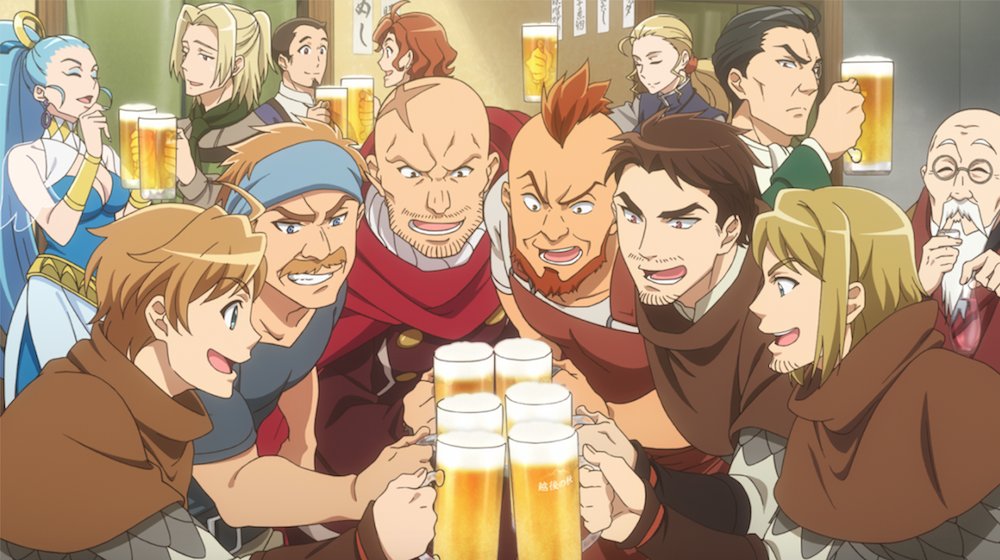
“Isekai Izakaya” primarily revolves around the theme of cultural exchange. The food from Nobu introduces the people of Aiteria to Japanese cuisine, fostering curiosity and appreciation for a new culture.
Each episode or chapter typically features a specific dish, highlighting its preparation, ingredients, and the customers’ reactions. This culinary exploration serves as a medium for cultural exchange, demonstrating how food can transcend boundaries and connect people from different backgrounds.
The izakaya itself represents a place of comfort and community. Nobu becomes a sanctuary for the citizens of Aiteria, offering them not only delicious food but also a sense of belonging and warmth. The series emphasizes the idea that a shared meal can create bonds and provide solace, making Nobu a central hub for various characters’ stories and personal growth.
Unlike many isekai series that focus on adventure and action, “Isekai Izakaya” adopts a slice-of-life approach. The narrative is driven by the everyday experiences of the characters, both the staff and the patrons. This approach allows for a deeper exploration of individual stories, relationships, and the impact of Nobu on the lives of its customers.
The series pays meticulous attention to the details of Japanese cuisine, from the preparation techniques to the presentation of the dishes. This authenticity not only educates the audience about Japanese food but also enhances the overall viewing and reading experience. The detailed depiction of food, combined with the characters’ genuine reactions, adds to the series’ charm and appeal.
Taisho is the skilled chef and owner of Nobu. His passion for cooking and his dedication to providing high-quality food make him a beloved figure among the customers. Taisho’s calm and composed demeanor, along with his culinary expertise, form the backbone of the izakaya.
Shinobu is the hardworking and friendly waitress at Nobu. Her cheerful personality and efficient service contribute to the welcoming atmosphere of the pub. Shinobu’s interactions with the customers and her genuine care for their well-being make her an integral part of the establishment.
The series features a variety of regular customers from Aiteria, each with their own unique stories and backgrounds. Characters such as Hans, a palace guard, and Berthold, a merchant, become recurring figures whose lives are positively impacted by their experiences at Nobu. The diverse clientele adds depth to the narrative and showcases the wide-reaching influence of the izakaya.
The manga adaptation by Virginia Nitōhei captures the essence of the light novel through detailed artwork and expressive character designs. The illustrations of food are particularly noteworthy, as they vividly bring the dishes to life and emphasize their appeal. The anime adaptation by Sunrise maintains this visual quality, with vibrant colors and fluid animation that enhance the storytelling.
The anime also incorporates live-action segments where a real chef demonstrates how to prepare the featured dishes. These segments add an educational element, allowing viewers to learn more about Japanese cuisine and try making the dishes themselves. The combination of animation and live-action creates a unique viewing experience that sets “Isekai Izakaya” apart from other series.
“Isekai Izakaya” has been well-received for its heartwarming narrative, engaging characters, and mouth-watering depiction of food. The series’ focus on culinary culture and its slice-of-life approach offer a refreshing take on the isekai genre. Critics and fans alike have praised its ability to evoke a sense of warmth and comfort, making it an enjoyable and relaxing watch.
The live-action cooking segments in the anime have also been appreciated for their informative value and their contribution to the overall theme of cultural exchange. The series’ success has led to a dedicated fanbase and the continued popularity of both the light novel and manga adaptations.
“Isekai Izakaya: Japanese Food From Another World” is a delightful series that combines the charm of a cozy pub with the intrigue of another world.
Through its focus on food, cultural exchange, and human connection, the series offers a unique and heartwarming narrative that stands out in the isekai genre. The detailed depiction of Japanese cuisine, coupled with the engaging characters and their stories, creates an immersive and enjoyable experience for readers and viewers alike.
Whether you are a fan of culinary tales, slice-of-life narratives, or isekai adventures, “Isekai Izakaya” provides a refreshing and satisfying journey that highlights the simple yet profound joy of sharing a good meal.
The series reminds us of the power of food to bring people together, foster understanding, and create lasting memories, making it a must-read and must-watch for anyone seeking a wholesome and enriching story.
18. Doctor Elise

Doctor Elise follows the journey of Elise de Clorance, initially portrayed as a spoiled individual whose selfish actions lead to tragedy for her family and herself. After meeting her demise, she finds herself said to the real world, where she assumes the role of a doctor and endeavors to help others. However, her altruistic efforts are short-lived as she meets her end once more, only to be reincarnated into her original world, inhabiting her younger self.
The narrative of Doctor Elise is characterized by its simplicity and warmth, primarily focusing on Elise’s growth and redemption. With a central emphasis on character development, the story eschews fantastical elements like monsters. Instead, it chronicles Elise’s earnest attempts to utilize her medical expertise from her past life to heal and save lives in her current world.
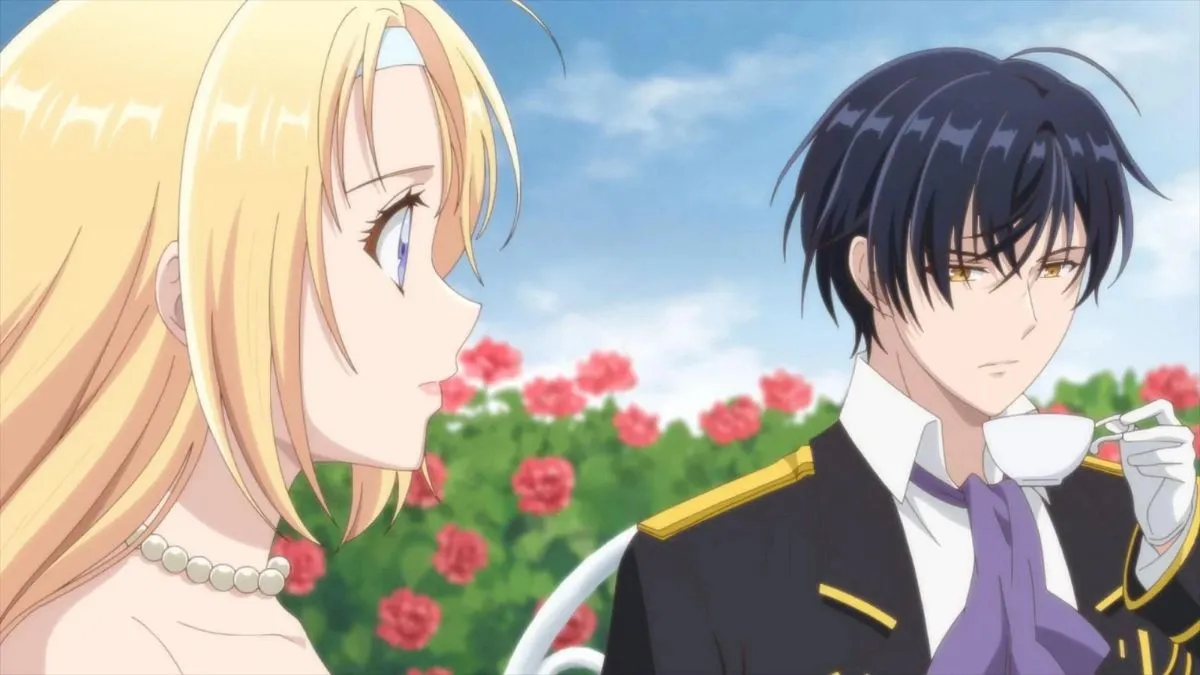
“Doctor Elise: The Royal Lady with the Lamp” (also known as “The Elegant Surgeon” or “Queen with a Scalpel”) is a popular Korean webtoon written by Yuin and illustrated by Mini. The webtoon, which began serialization in 2017, has garnered significant attention for its unique blend of historical romance, medical drama, and fantasy.
The story centers on Dr. Song Jihyun, a modern-day genius surgeon, who is reincarnated into the body of Princess Elise de Clorance in a medieval-like fantasy world. Combining her medical knowledge from her previous life with her new royal identity, Elise strives to rectify her past mistakes and improve the lives of those around her.
Dr. Song Jihyun is a renowned cardiac surgeon, respected and admired for her skills. However, a tragic accident results in her untimely death. To her surprise, she finds herself reincarnated as Princess Elise de Clorance, a spoiled and tyrannical noblewoman from her past life who was eventually executed for her misdeeds. Given a second chance, Elise is determined to change her fate and use her medical expertise to help others.
Elise’s journey is twofold: she must navigate the complex social and political of the kingdom while advancing medical knowledge in an era where such practices are primitive.
As she gains the trust and admiration of those around her, including the stoic Crown Prince Linden, Elise works tirelessly to establish a medical clinic and introduce modern medical practices. Her actions not only improve public health but also mend the relationships she had previously damaged.
One of the core themes of “Doctor Elise” is redemption. Elise’s journey from a despised princess to a revered doctor underscores the importance of self-improvement and atonement. Her efforts to correct her past wrongdoings and make a positive impact on the world highlight the potential for personal growth and transformation.
The series places a significant emphasis on medical knowledge and innovation. Elise’s modern medical expertise allows her to introduce groundbreaking practices and treatments, challenging the outdated methods of the time. This theme not only showcases the importance of medical advancement but also underscores the value of knowledge and education.
As a princess with significant influence, Elise’s actions carry substantial weight. Her journey illustrates the responsibilities that come with power and the impact that leadership can have on society. By using her position to promote health and well-being, Elise embodies the ideal of a benevolent ruler who prioritizes the welfare of her people.
Interpersonal relationships and romance play a pivotal role in the narrative. Elise’s evolving relationship with Crown Prince Linden, in particular, adds depth to her character and provides emotional stakes. The series explores themes of trust, loyalty, and love, enriching the overall story.
Elise is the protagonist, whose dual identity as a modern-day surgeon and a medieval princess drives the narrative. Her intelligence, determination, and compassion make her a compelling character. Elise’s transformation from a selfish noblewoman to a dedicated healer is central to the story’s theme of redemption.
Linden is the stoic and principled Crown Prince who becomes one of Elise’s closest allies and romantic interest. His support and admiration for Elise’s medical endeavors highlight his progressive nature and his desire to improve his kingdom.
Aiden is one of Elise’s former suitors and a key political figure. His complicated relationship with Elise adds tension and intrigue to the story. Aiden’s character development mirrors Elise’s, as he learns to appreciate her newfound altruism and medical contributions.
Duke Rodger is a close friend and confidant of Elise. His loyalty and unwavering support play a crucial role in her efforts to establish medical practices in the kingdom.
The art style of “Doctor Elise” is detailed and visually appealing, effectively capturing the historical and fantastical elements of the story. The character designs are elegant, with a strong emphasis on expressive facial features that convey a wide range of emotions. The depiction of medical procedures, while sometimes simplified, is handled with care and attention to detail, enhancing the authenticity of Elise’s medical expertise.
The illustrations of period costumes and settings add to the immersive experience, bringing the medieval-like fantasy world to life. The use of color and shading is particularly noteworthy, contributing to the overall aesthetic and mood of the series.
“Doctor Elise” has been well-received for its unique premise, engaging characters, and a blend of medical and historical elements. The series stands out in the crowded isekai and reincarnation genre by focusing on the protagonist’s professional skills and her efforts to bring about societal change. Readers appreciate the strong, intelligent female lead and the detailed exploration of medical themes.
The webtoon’s success has led to widespread popularity, particularly among fans of historical and medical dramas. Its compelling narrative and rich character development have earned it a dedicated fanbase and critical acclaim.
“Doctor Elise: The Royal Lady with the Lamp” is a nice series that seamlessly weaves together themes of redemption, medical innovation, and romance.
Through the journey of Elise, readers are treated to a story of personal growth, societal impact, and the transformative power of knowledge. The series’ emphasis on medical expertise and historical context sets it apart, offering a refreshing take on the isekai and reincarnation genre.
The detailed art and well-developed characters further enhance the narrative, making “Doctor Elise” a must-read for fans of historical romance and medical dramas.
Whether you are drawn to the themes of redemption and self-improvement or the intricate blend of fantasy and reality, “Doctor Elise” delivers a satisfying and enriching reading experience.
17. That Time I Got Reincarnated as a Slime

That Time I Got Reincarnated as a Slime has indeed solidified its place as a classic series with a sizable fanbase. With the recent start of its fourth season, the story of Rimuru Tempest continues to fascinate audiences. After being reincarnated into another world as a shapeless mass, Rimuru goes on an extraordinary journey that leads him to become a powerful demon lord.
Throughout the series, Rimuru navigates through a myriad of remarkable events, eventually founding his own nation and reshaping the world around him. That Time I Got Reincarnated as a Slime boasts an array of endearing characters, exhilarating action sequences, and humorous moments, making it a delightful watch for fans of all tastes.
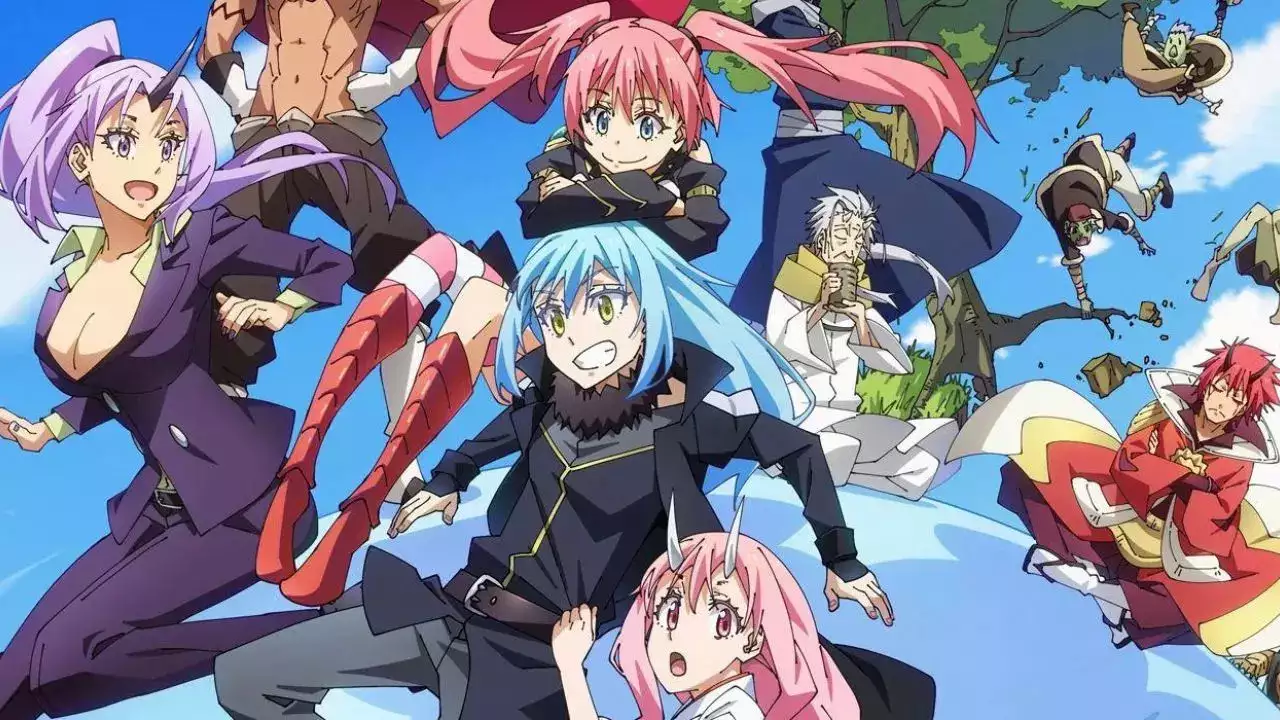
“That Time I Got Reincarnated as a Slime”, Tensei Shitara Slime Datta Ken), often abbreviated as “TenSura” or “Slime Isekai,” is a Japanese light novel series written by Fuse and illustrated by Mitz Vah. Initially serialized as a web novel from 2013 to 2016, it was later published as a light novel by Micro Magazine beginning in 2014.
The series has spawned a successful manga adaptation illustrated by Taiki Kawakami, as well as an anime adaptation by Eight Bit that first aired in 2018. “That Time I Got Reincarnated as a Slime” offers a unique twist on the popular isekai (another world) genre, combining elements of fantasy, adventure, and comedy to deliver an engaging and refreshing story.
The story begins with Satoru Mikami, a 37-year-old corporate worker leading an unremarkable life in Tokyo. His mundane existence is abruptly cut short when he is stabbed by a random assailant. As he dies, Satoru hears a series of commands and wishes being granted.
Upon regaining consciousness, he finds himself reincarnated in a fantasy world as a slime, one of the weakest and most insignificant creatures. However, this new slime form comes with unique abilities, including the power to devour anything and mimic its properties, and an AI-like entity called the Great Sage that guides him.
Adopting the name Rimuru Tempest, he begins to explore his new world, quickly realizing his potential. Through a combination of strategic thinking, negotiation, and his newfound powers, Rimuru gains allies and establishes the Jura Tempest Federation, a nation where various races coexist peacefully.
The series follows Rimuru’s journey from a lowly slime to a powerful leader, navigating political intrigue, battles, and the complexities of building a new society.
The central theme of “TenSura” revolves around transformation and self-discovery. Rimuru’s reincarnation as a slime symbolizes a fresh start and the potential for growth and change. As Rimuru adapts to his new form and abilities, he discovers new facets of his personality and capabilities, highlighting the idea that even the most unlikely beginnings can lead to greatness.
Rimuru’s journey from a solitary slime to the ruler of a prosperous nation emphasizes themes of leadership and diplomacy. Rather than relying solely on brute force, Rimuru often resolves conflicts through negotiation and alliances, fostering a sense of community and cooperation among diverse races.
This approach to leadership underscores the importance of empathy, understanding, and strategic thinking in building and maintaining a successful society.
With great power comes great responsibility, and Rimuru’s rise to power is accompanied by a growing sense of duty towards his allies and citizens. The series explores how Rimuru balances his immense strength with the ethical and moral responsibilities of leadership, often prioritizing the well-being of his people and striving to create a just and peaceful world.
“TenSura” excels in its detailed and immersive world-building. The series introduces a richly developed fantasy world filled with various races, cultures, and magical systems. The lore and history of the world are intricately woven into the narrative, providing a deep and engaging backdrop for Rimuru’s adventures.
Rimuru is the protagonist, initially reincarnated as a slime but quickly rising to prominence due to his unique abilities and intelligence. His character is defined by his compassion, strategic mind, and desire to create a harmonious society. Rimuru’s transformation from a regular office worker to a powerful and wise leader is central to the series.
Veldora is a powerful Storm Dragon who befriends Rimuru early in the series. Sealed away in a cave for centuries, Veldora forms a pact with Rimuru, granting him the surname Tempest. Their bond is one of mutual respect and friendship, significantly impacting Rimuru’s journey.
Shizu is a Japanese woman summoned to the fantasy world during World War II and fused with the Flame Giant Ifrit. Her encounter with Rimuru profoundly influences his perspective on life and humanity. Shizu’s story adds emotional depth to the series and highlights the connection between Rimuru’s past and present lives.
Benimaru is one of the Kijin, a race of ogre-like beings who become Rimuru’s loyal followers after he saves them from annihilation. Benimaru and his fellow Kijin embody themes of loyalty, strength, and the willingness to rebuild after tragedy, contributing to the Jura Tempest Federation’s growth and prosperity.
Milim is a powerful Demon Lord with a childlike demeanor and immense strength. Her friendship with Rimuru adds a layer of complexity to the political dynamics of the series, showcasing Rimuru’s ability to forge alliances with even the most formidable beings.
The art style of both the manga and anime adaptations of “TenSura” is vibrant and dynamic, effectively capturing the whimsical yet epic nature of the story.
The character designs are distinctive and expressive, allowing for a clear differentiation between the various races and personalities. The animation in the anime is fluid, especially during action scenes, which are choreographed with a blend of intensity and humor. The visual portrayal of Rimuru’s abilities, particularly his transformations and use of magic, is both creative and visually appealing.
The world-building is further enhanced by the detailed backgrounds and settings, which bring the fantasy world to life. The use of color and lighting adds to the overall atmosphere, creating a sense of wonder and adventure.
“That Time I Got Reincarnated as a Slime” has been well-received by both critics and audiences, praised for its refreshing take on the isekai genre and its engaging storytelling.
The series’ balance of humor, action, and heartfelt moments has contributed to its popularity, making it a standout in a crowded genre. The anime adaptation, in particular, has garnered a large following, leading to the production of additional seasons and spin-off content.
The series’ success can be attributed to its well-developed characters, intricate world-building, and the unique premise of a protagonist who starts as a seemingly weak creature but rises to greatness through wit and empathy. The positive reception has also led to various merchandise, games, and cross-media adaptations, further cementing its place in popular culture.
“That Time I Got Reincarnated as a Slime” offers a compelling blend of fantasy, adventure, and comedy, with a unique twist on the isekai genre.
Through the journey of Rimuru Tempest, the series explores themes of transformation, leadership, and the power of community. Its detailed world-building and diverse cast of characters provide a rich and immersive experience for readers and viewers alike.
Whether you are drawn to the imaginative fantasy setting, the strategic and diplomatic aspects of leadership, or the lighthearted humor and action, “TenSura” delivers a satisfying and entertaining story.
The series’ ability to balance epic adventures with personal growth and meaningful relationships makes it a must-read and must-watch for fans of the isekai genre and beyond.
16. How A Realist Hero Rebuilt The Kingdom
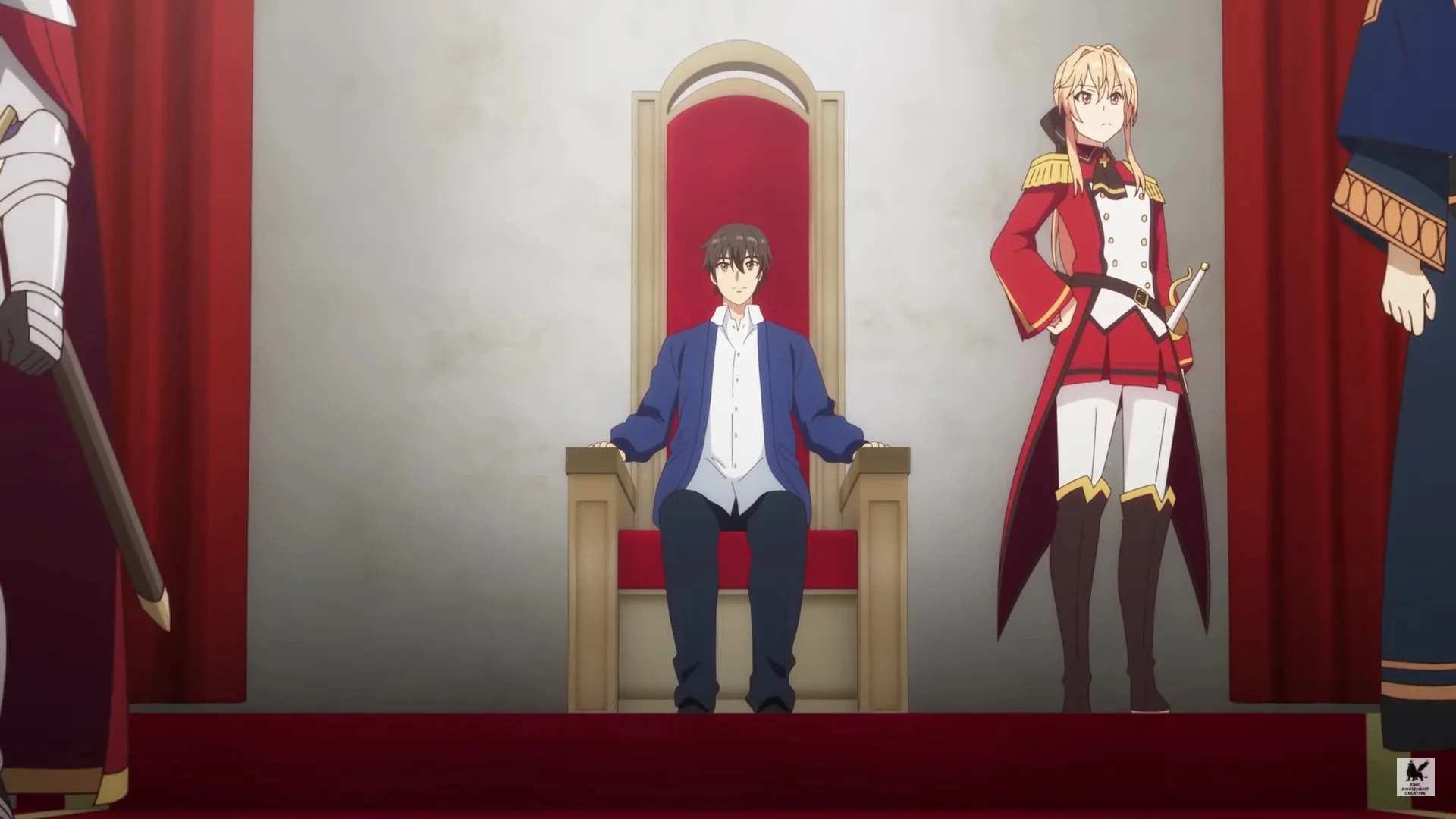
In Realist Hero, Kazuya finds himself unexpectedly transported to another world and immediately thrust into a perilous situation as he is summoned by the inhabitants of a city to participate in a war against demons. Unlike typical fighters, Kazuya lacks combat skills and opts for a more strategic approach to protect the city.
Drawing upon his experience as a civil servant, Kazuya employs his organizational and administrative abilities to rebuild and improve the city’s infrastructure, ensuring its stability and security against future threats. This unique approach to defense resonates with fans who appreciate the harem elements present in Realist Hero and Skeleton Knight in Another World.
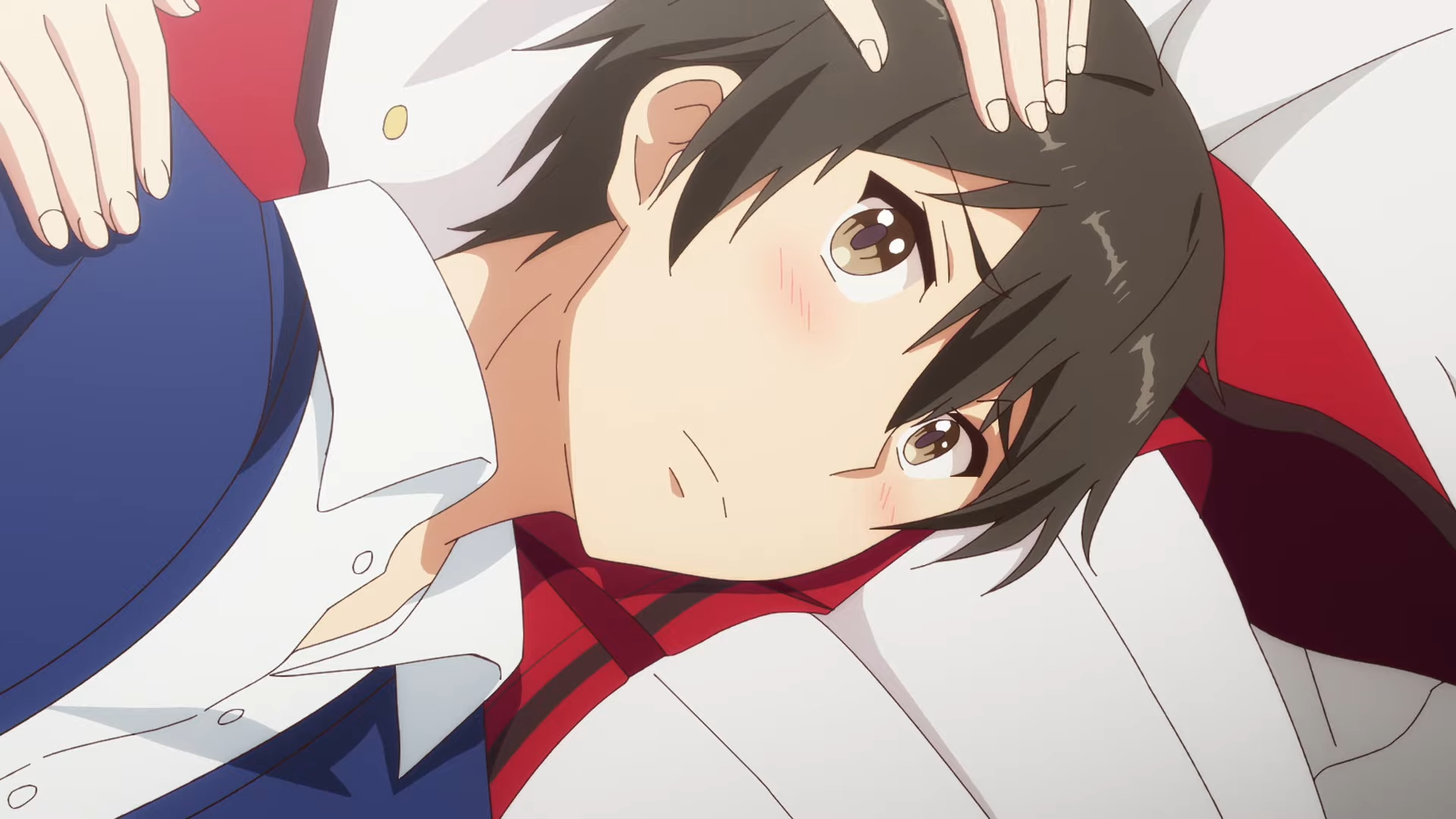
“How a Realist Hero Rebuilt the Kingdom” (現実主義勇者の王国再建記, Genjitsu Shugi Yuusha no Oukoku Saikenki), written by Dojyomaru and illustrated by Fuyuyuki, is a Japanese light novel series that has garnered significant attention for its unique take on the isekai genre.
Unlike many fantasy stories that emphasize grand battles and epic quests, this series focuses on political strategy, economic development, and governance. The light novel began serialization in 2016 and has since been adapted into a manga and an anime series by J.C. Staff, which first aired in 2021. This detailed review will explore the plot, themes, characters, and overall impact of the series.
The story follows Kazuya Souma, a university student who is suddenly transported to the Elfrieden Kingdom, a fantasy world in dire straits. Unlike typical isekai protagonists who wield swords or magic, Kazuya is an ordinary young man with a keen mind for politics and economics. Summoned to be a “hero” to save the kingdom, Kazuya’s practical skills and knowledge soon prove invaluable.
Instead of fighting monsters, Kazuya focuses on rebuilding the kingdom by implementing reforms, streamlining bureaucracy, and addressing economic and social issues.
The plot goes into various aspects of statecraft, such as managing resources, fostering diplomacy, and handling internal strife. Kazuya’s pragmatic approach and innovative solutions gradually transformed the struggling Elfrieden Kingdom into a prosperous and stable realm.
The series stands out for its emphasis on realism and practicality in governance. Kazuya’s approach to solving problems is grounded in logic and practicality rather than fantasy or idealism. His methods include modern economic principles, efficient administration, and strategic planning, making the narrative more relatable and intellectually stimulating.
“How a Realist Hero Rebuilt the Kingdom” goes deeply into political and economic strategies. Kazuya’s efforts to stabilize and grow the kingdom involve dealing with trade, agriculture, infrastructure, and social policies. This focus on the intricacies of governance offers a refreshing change from the action-oriented plots of many fantasy series.
The story explores themes of leadership and responsibility. Kazuya’s role as a ruler requires him to make difficult decisions, balance competing interests, and sometimes face moral dilemmas. His journey highlights the complexities of leadership and the burdens that come with power.
Diplomacy plays a crucial role in Kazuya’s strategy. Building alliances, negotiating with other nations, and handling diplomatic crises are key elements of the plot. This theme underscores the importance of cooperation and negotiation in maintaining peace and stability.
Kazuya is the protagonist, whose pragmatic and analytical mind drives the story. His background in political science and economics equips him to address the kingdom’s issues effectively. Kazuya’s character development revolves around his growing sense of responsibility and his evolving leadership skills.
Liscia is the crown princess of the Elfrieden Kingdom and Kazuya’s fiancée. Initially skeptical of Kazuya’s methods, she soon becomes his staunch supporter and partner in governance. Liscia’s intelligence, strength, and dedication make her a vital ally in Kazuya’s reforms.
Aisha is a dark elf warrior who pledges her loyalty to Kazuya. Her combat skills and unwavering loyalty make her a formidable protector and a key member of Kazuya’s inner circle.
Juna is a talented singer and a member of the Elfrieden Navy. She becomes an important asset in Kazuya’s diplomatic and cultural initiatives, helping to foster unity and morale within the kingdom.
Hakuya is a brilliant strategist who serves as Kazuya’s chief advisor. His intelligence and insight are crucial in implementing Kazuya’s reforms and navigating the kingdom’s political.
The art style of both the light novel and the manga is detailed and aesthetically pleasing. Fuyuyuki’s illustrations capture the characters’ expressions and the setting’s intricacies effectively, enhancing the narrative’s impact.
The anime adaptation by J.C. Staff maintains this quality, with fluid animation and vibrant colors that bring the world of Elfrieden to life. The character designs are distinct and memorable, contributing to the overall appeal of the series.
“How a Realist Hero Rebuilt the Kingdom” has been praised for its innovative approach to the isekai genre. The series’ focus on political and economic themes sets it apart from more conventional fantasy narratives. Its intellectual depth and emphasis on practical problem-solving have resonated with readers and viewers who appreciate a more grounded and thoughtful storyline.
The series has also sparked discussions about governance and leadership, highlighting the importance of strategic thinking and responsible decision-making. Its success has led to multiple adaptations and a growing fanbase, establishing it as a notable work in contemporary fantasy literature.
“How a Realist Hero Rebuilt the Kingdom” offers a unique and engaging narrative that combines the elements of fantasy with the practicalities of governance.
Through the character of Kazuya Souma, the series explores themes of leadership, diplomacy, and economic strategy, providing a refreshing take on the isekai genre. The detailed world-building, well-developed characters, and intellectual depth make it a standout series that appeals to fans of fantasy and political intrigue alike.
Whether you are drawn to the intricacies of statecraft, the challenges of leadership, or the imaginative setting, “How a Realist Hero Rebuilt the Kingdom” delivers a thought-provoking and satisfying story.
Its emphasis on realism and practicality, coupled with its engaging plot and characters, ensures that it remains a compelling and influential work of fantasy literature.
15. Skeleton Knight in Another World
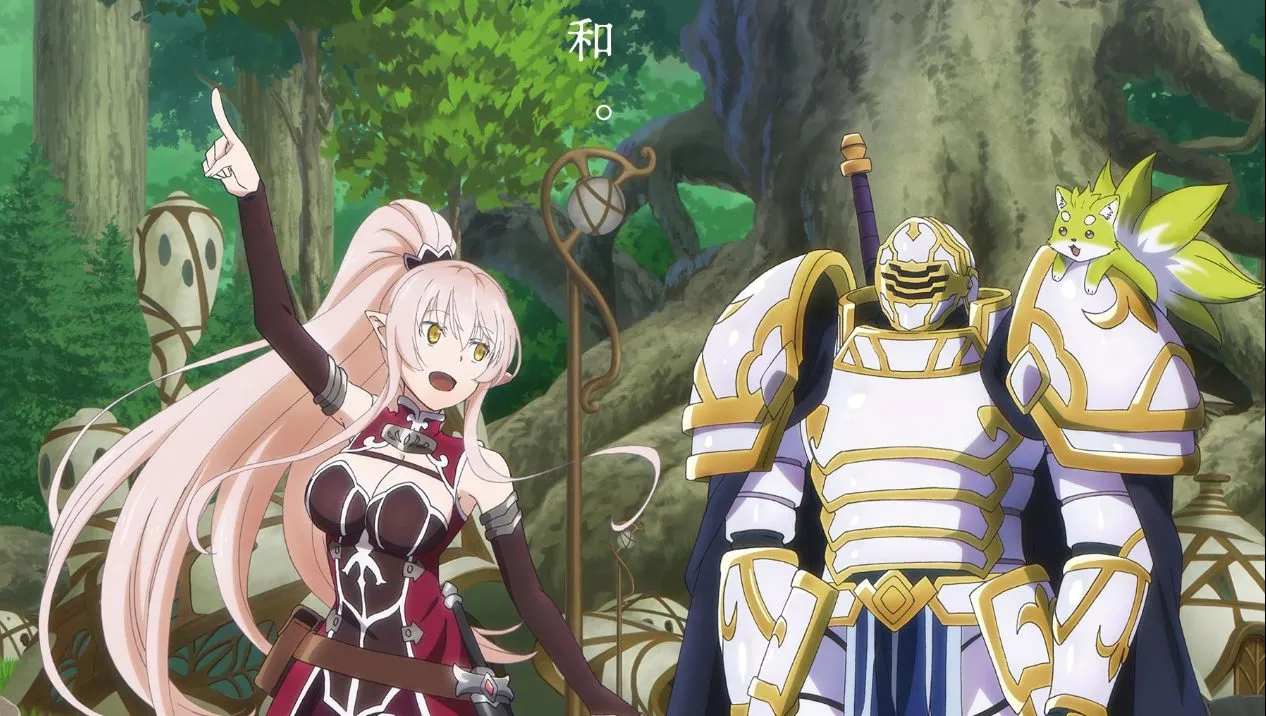
In his previous life, Lugh was renowned as the world’s most formidable assassin, faithfully serving an organization from a young age. However, his unwavering loyalty led to betrayal and his untimely demise at the hands of those he trusted. Offered a chance at redemption by a goddess, Lugh accepts her task in exchange for a second life.
Reborn into a noble family, Lugh’s mission is clear: assassinate the great hero and prevent the world’s destruction. Yet, navigating his new existence proves challenging as he grapples with emotions and experiences vastly different from his previous life. Fans drawn to the action-packed narrative of Skeleton Knight in Another World will find this series equally fascinating.
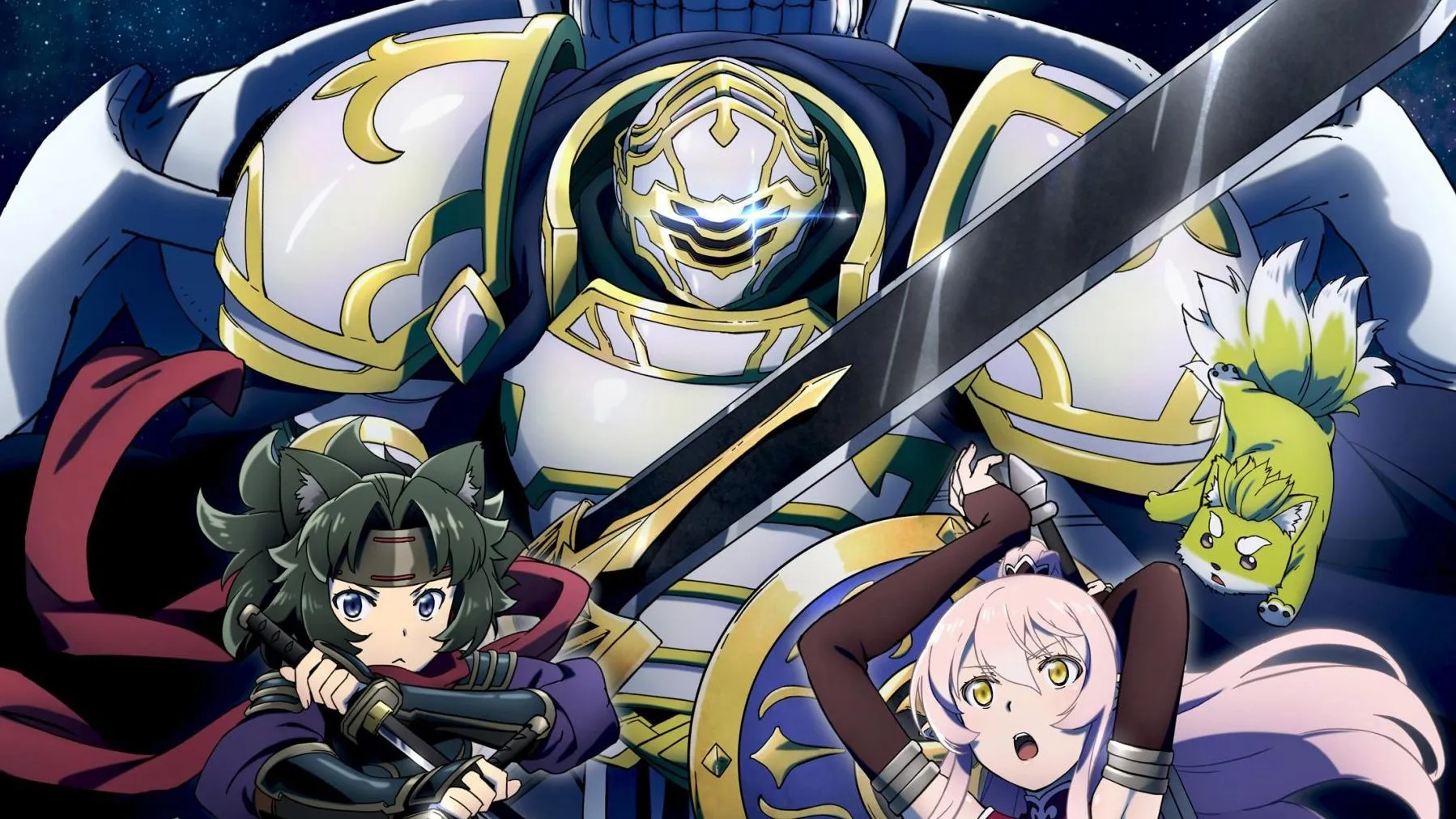
14. Full Dive: The Ultimate Next-Gen Full Dive RPG Is Even Shittier Than Real Life!
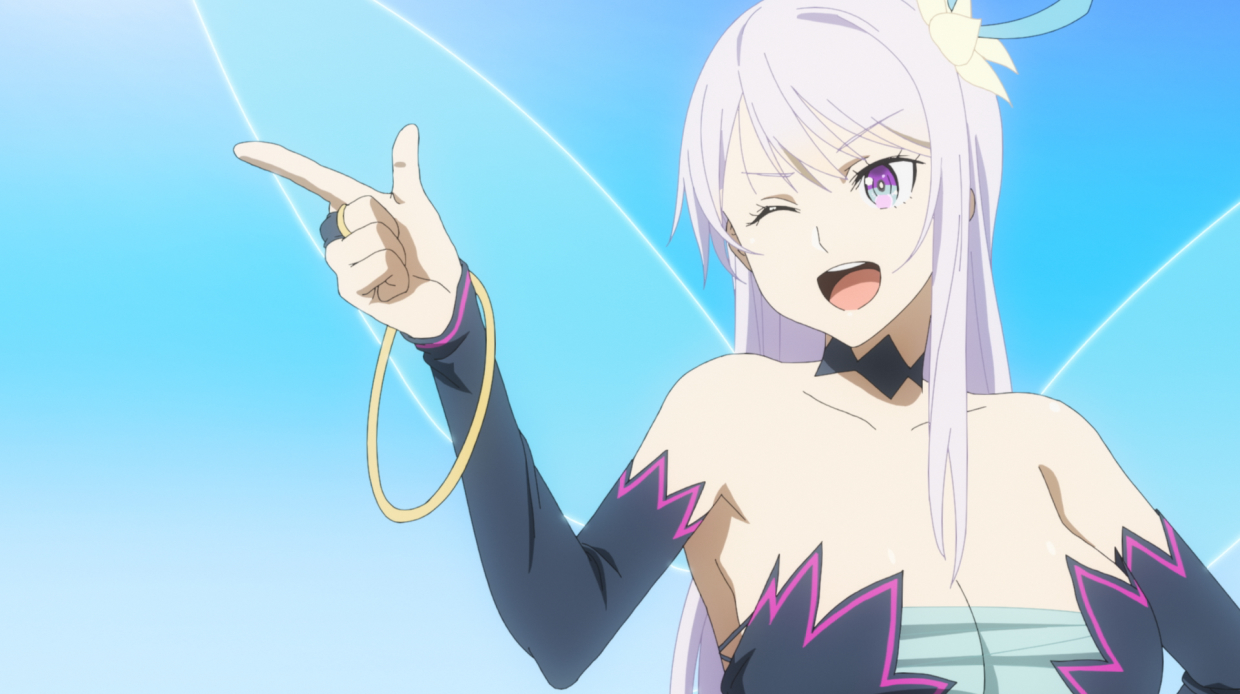
Full Dive presents a wild and comedic journey as hardcore gamer Yuuki reluctantly dives into an old MMOVR game at the behest of an eccentric hobby store worker. Initially feeling duped, Yuuki is surprised by the game’s immersive detail, allowing him to experience sensations unlike any other game.
However, his enthusiasm wanes as he faces the game’s harsh challenges, relying solely on his wit and real-life abilities to navigate through. Determined to conquer the game and prove his capabilities, Yuukiv look on an absurd yet enlightening adventure, learning valuable lessons along the way. Fans of the comedic elements in Skeleton Knight in Another World will find similar enjoyment in Full Dive.
13. Fran and the Sword
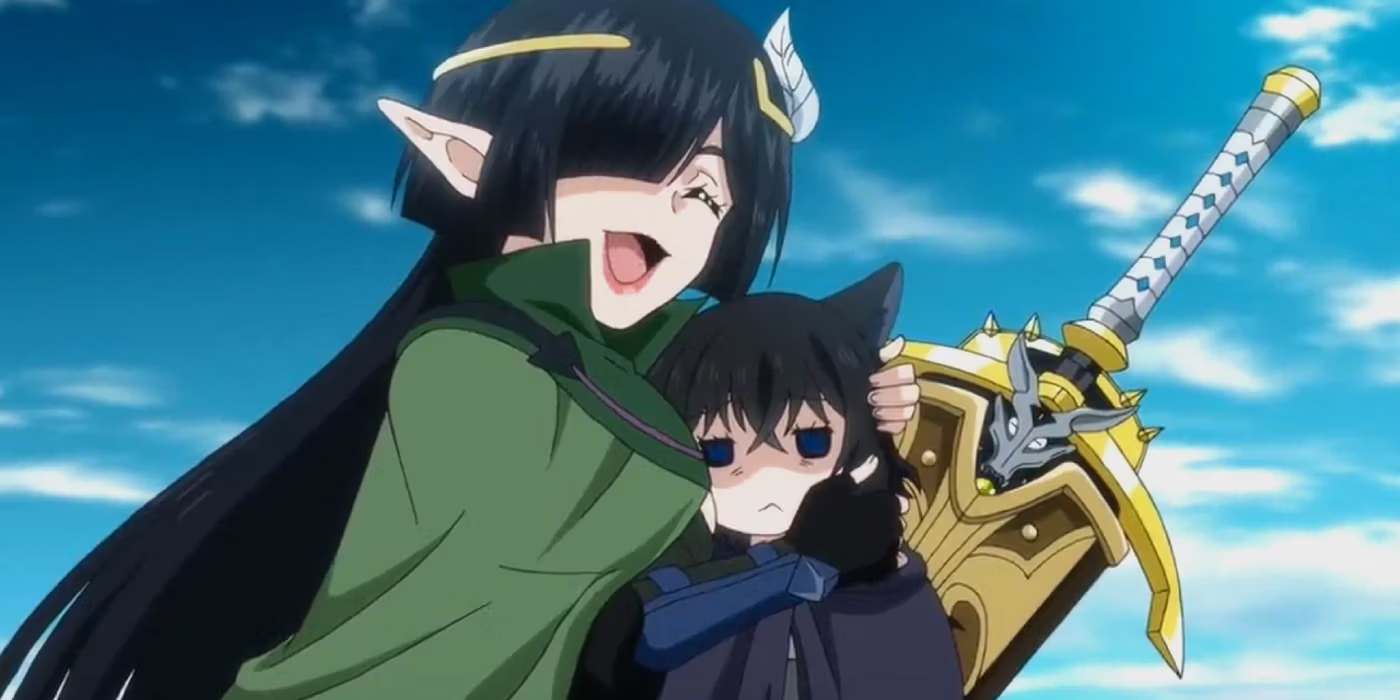
Fran and the Sword tells the tale of a young demihuman girl named Fran, hailing from an ostracized clan, who finds herself in a dire situation when faced with a ferocious monster and no means of escape. In a stroke of luck, Fran discovers a sword nearby and uses it to defeat the beast. To her astonishment, the sword possesses the ability to communicate with her through telepathy.
Bound by an unusual twist of fate, Fran forms a deep connection with the sword, which was once a human in a previous life but now exists as a formidable weapon. Together, they goes on an adventurous journey, forging a unique bond as they navigate through various challenges and encounters. Fans seeking an engaging reincarnation anime with light-hearted characters similar to those in Skeleton Knight in Another World are sure to find Fran and the Sword to be a delightful and enjoyable series.
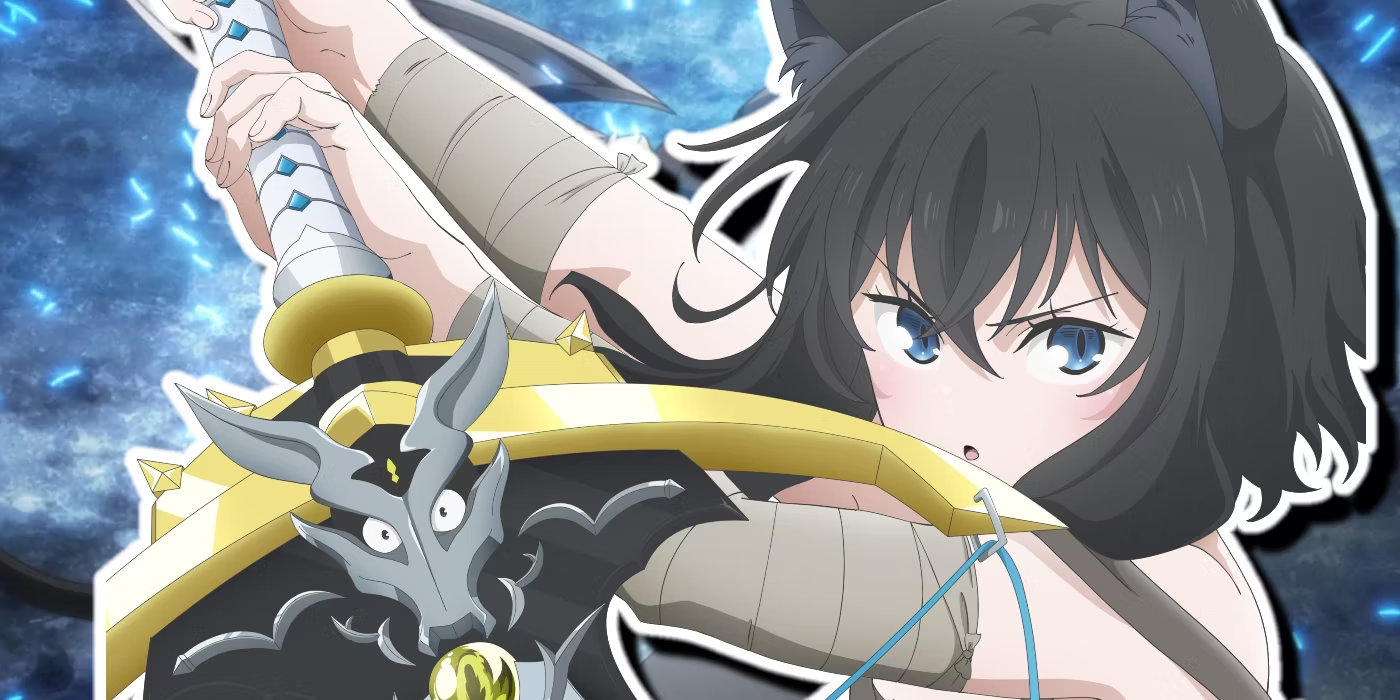
12. I Got Cheat Skills in Another World

I Got Cheat Skill in Another World follows the story of Yuuya, who has endured a life plagued by negative experiences with those around him, including his own family. Struggling to find hope after the loss of the only person who ever cared for him, Yuuya stumbles upon an interdimensional door that transports him to a mysterious new world.
In this newfound realm, Yuuya acquires extraordinary abilities that enable him to not only become the strongest individual in this new world but also make a significant impact on his own world. Filled with adventure, humor, and whimsical moments, I Got Cheat Skill in Another World offers an entertaining narrative that resonates with the tone of Skeleton Knight in Another World, making it an enjoyable series for fans of similar themes and settings.
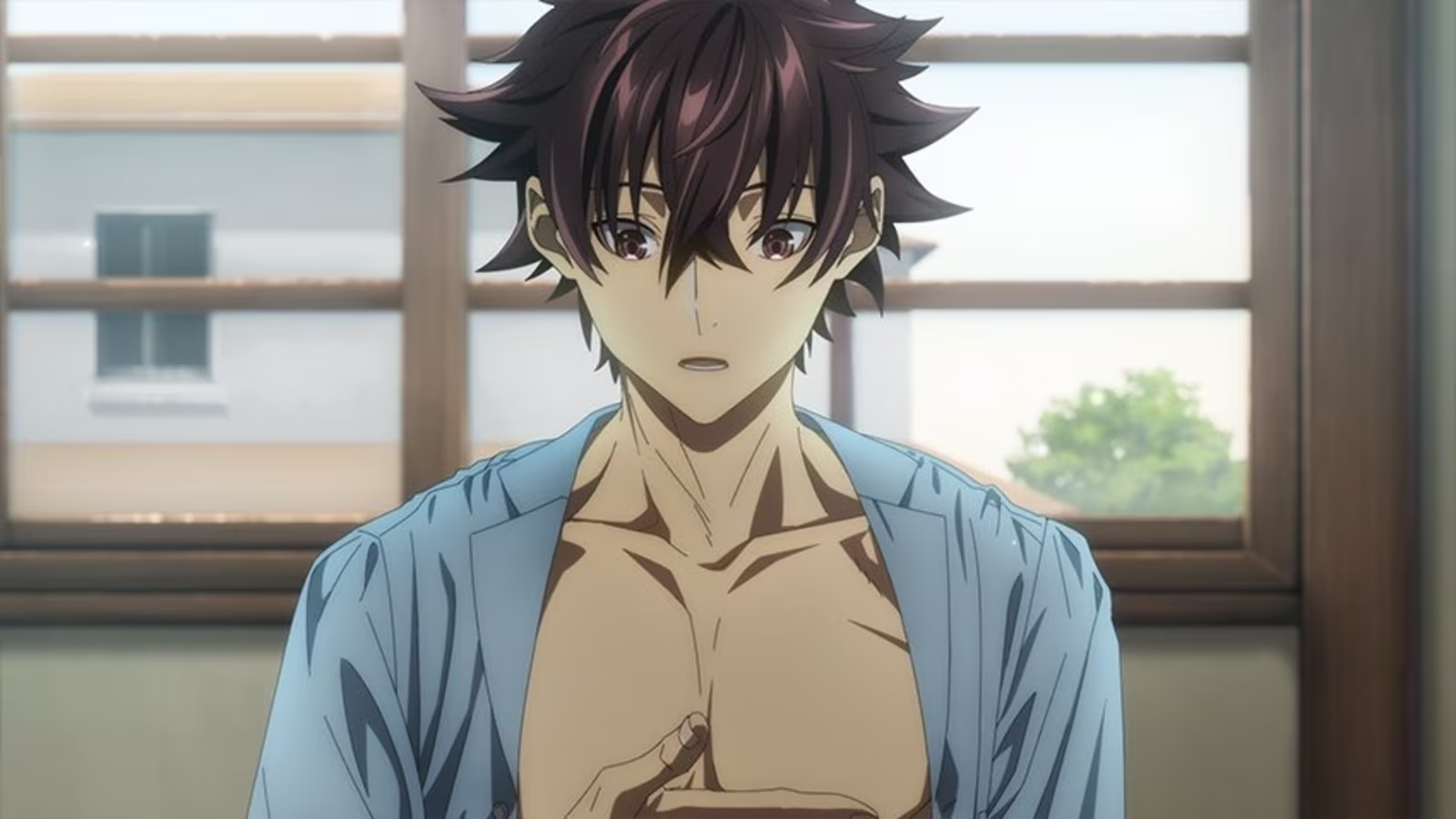
11. Is It Wrong To Pick Up Girls In A Dungeon?
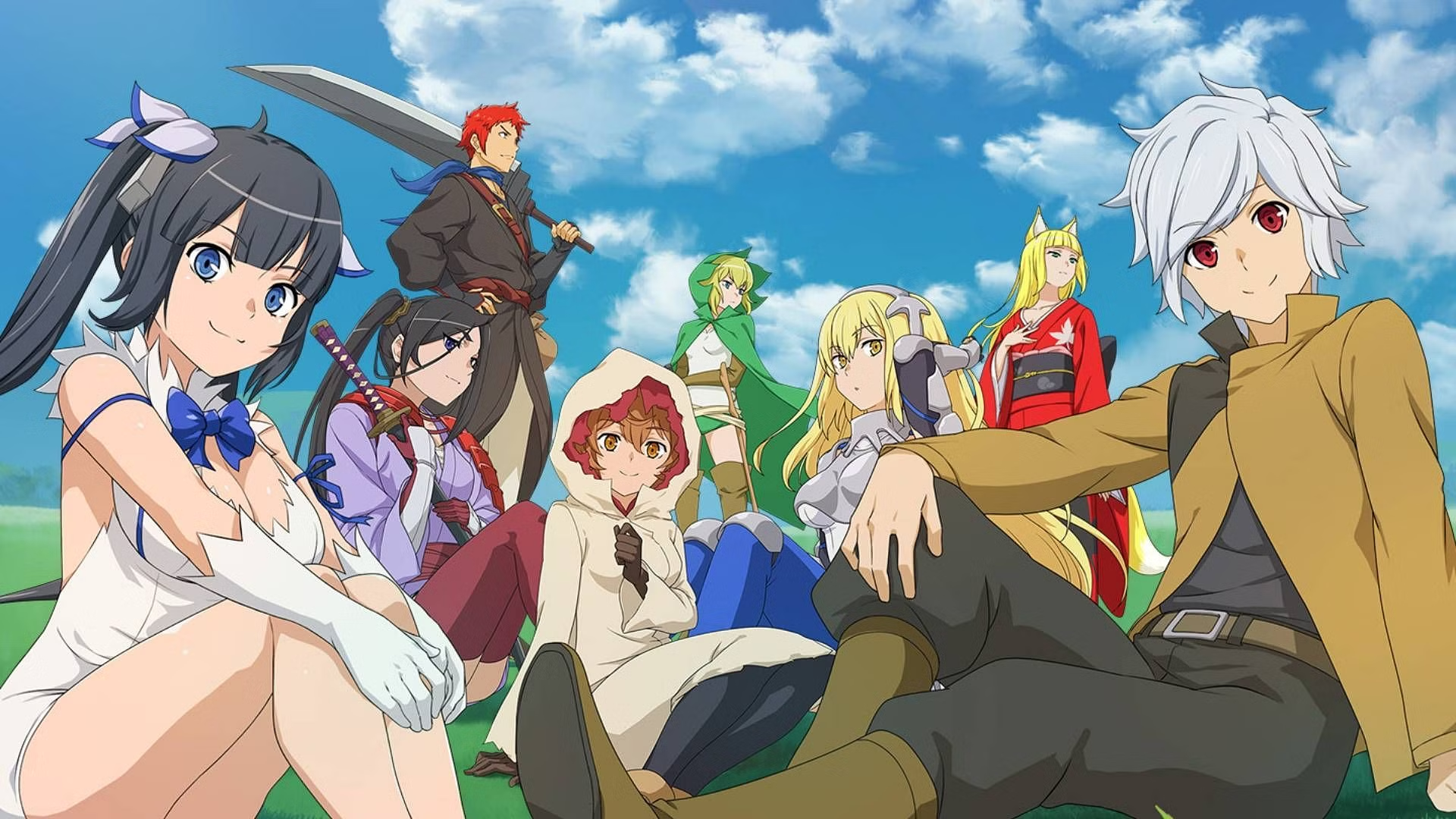
Bell, an aspiring adventurer, grapples with his inadequacies in tackling formidable dungeons, a crucial aspect of his profession. As the sole worshiper of the goddess Hestia, his daily struggles seem insurmountable. However, his mundane existence takes an extraordinary turn following a near-death experience.
Suddenly thrust into the spotlight, Bell garners attention from various gods and goddesses, some viewing him favorably while others perceive him as a threat. With newfound recognition comes loyal companionship as Bell goes on a quest to realize his dream of becoming the greatest adventurer. Fans of both Is It Wrong to Try to Pick Up Girls in a Dungeon? and Skeleton Knight in Another World will appreciate the vibrant and optimistic demeanor of protagonists Bell and Arc.
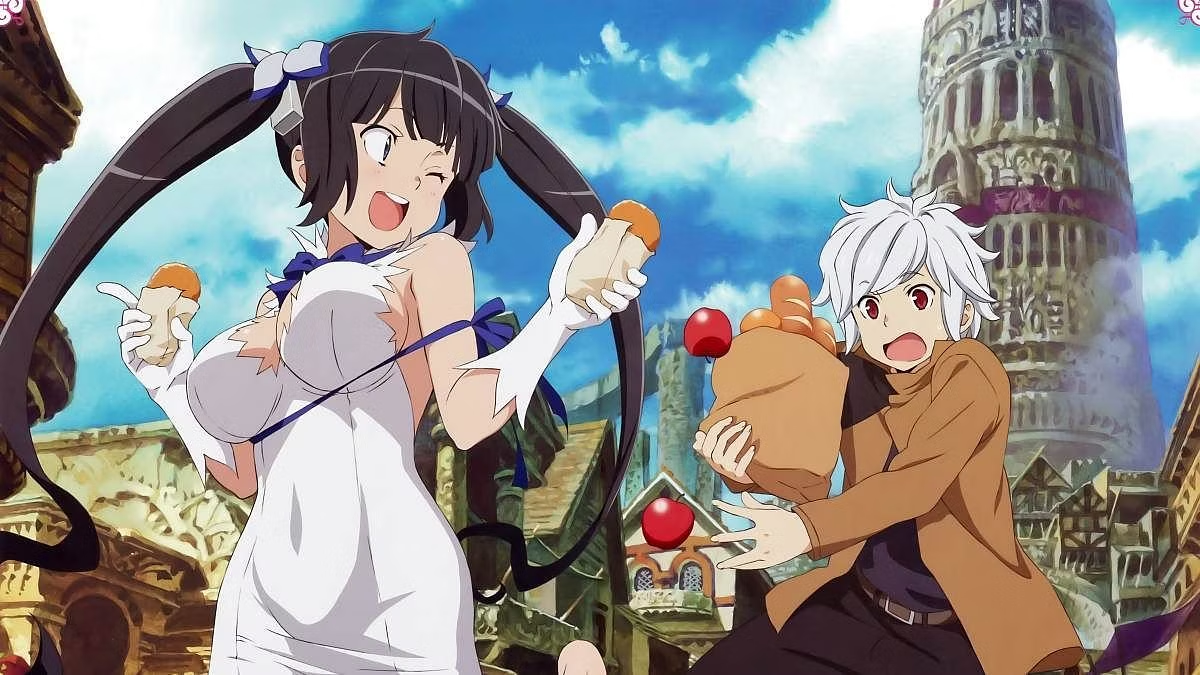
10. So I’m A Spider, So What?
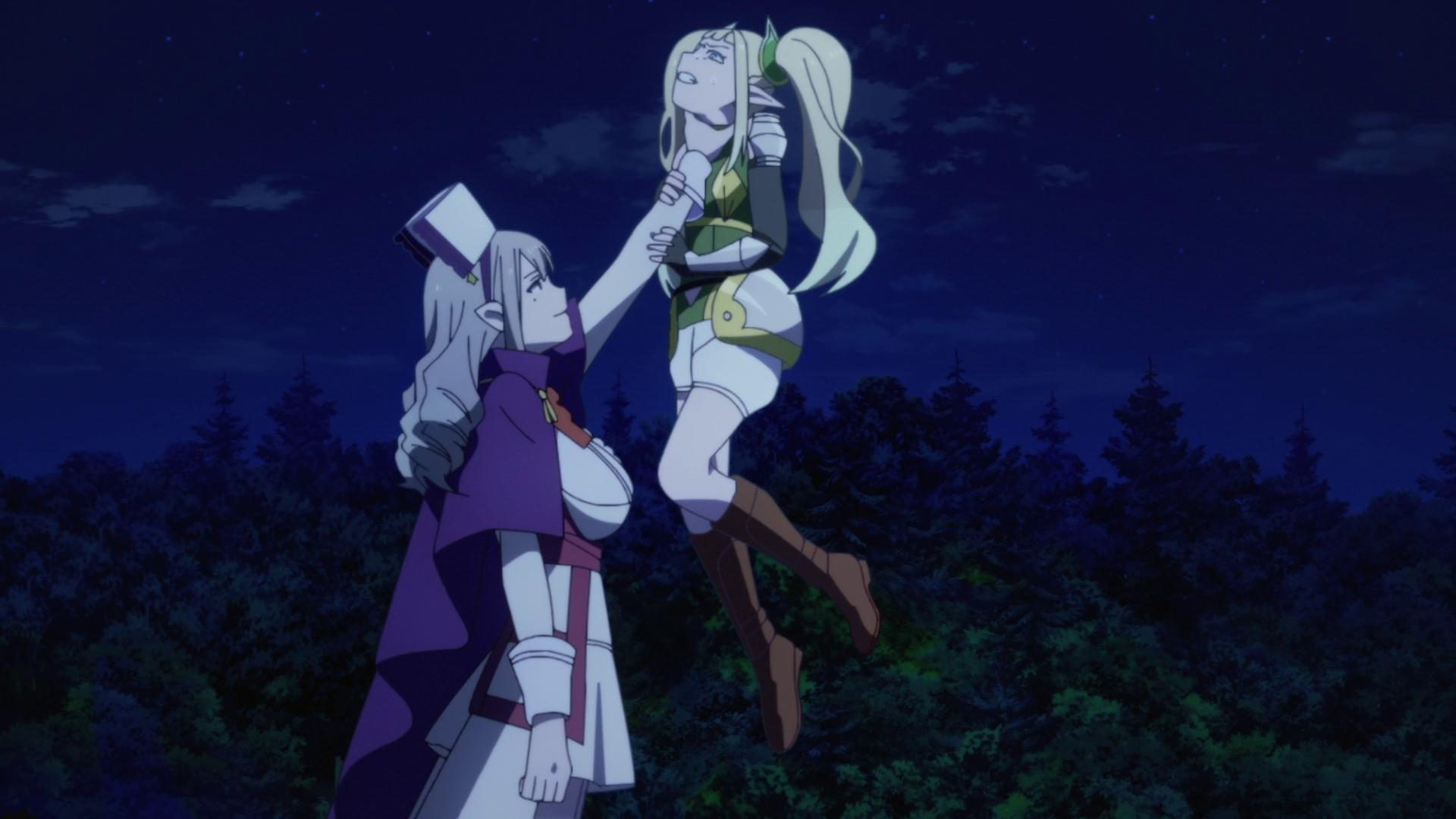
When a cohort of high school students finds themselves reincarnated into another world, each is bestowed with prestigious roles in the new society—soldiers, princesses, nobles—but not Kumoko. Unluckily, Kumiko awakens as a spider, deemed one of the weakest beings in the land.
Forced to adapt, Kumiko bravely confronts the challenges of her newfound existence. Surprisingly, she discovers hidden strengths within her arachnid form, navigating the world with newfound prowess. Fans intrigued by the transformative journey of protagonists will find parallels between Skeleton Knight in Another World and So I’m a Spider, So What?
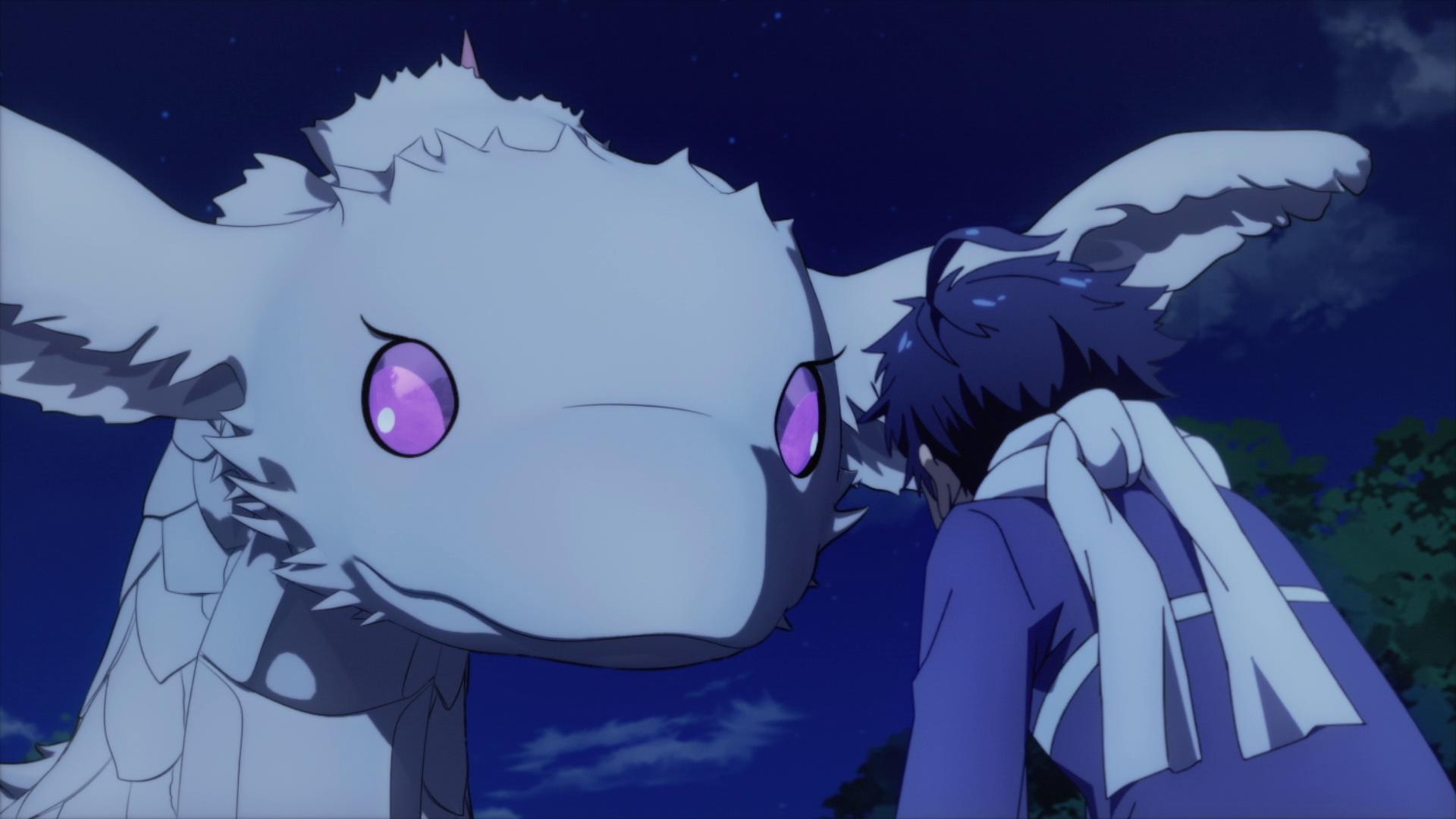
9. Mushoku Tensei Jobless Reincarnation
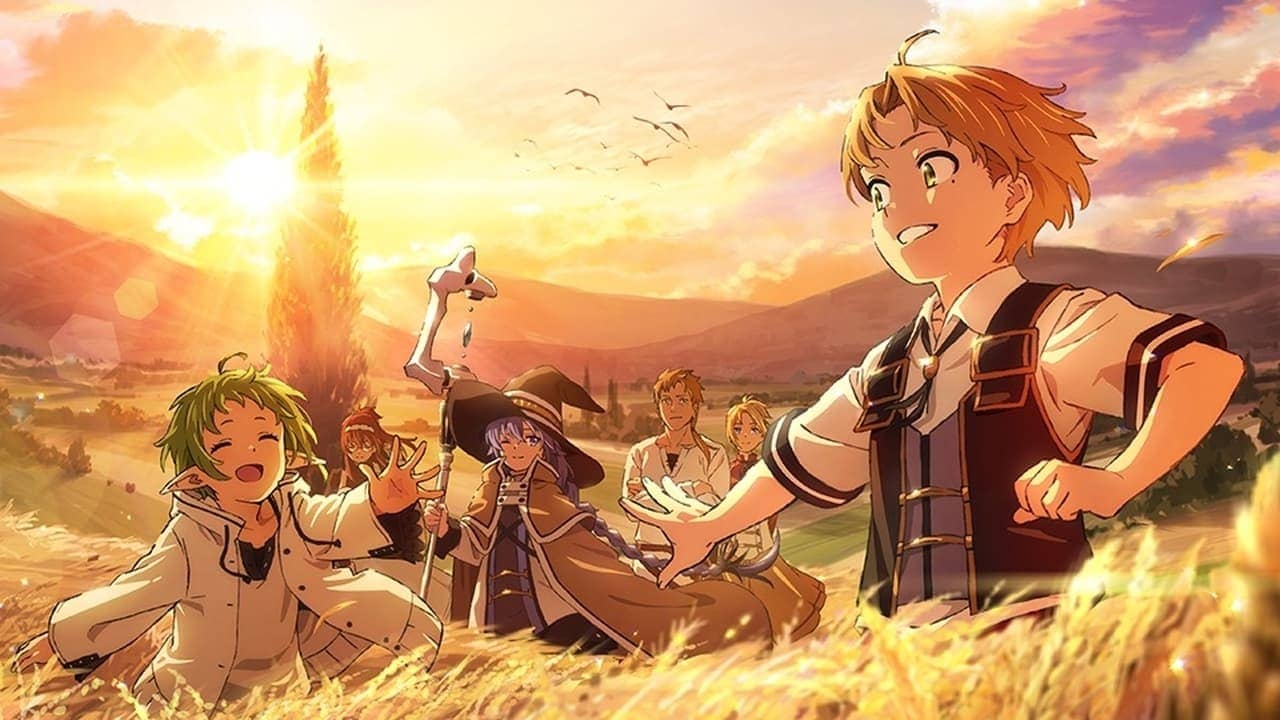
Jobless Reincarnation follows the journey of a downtrodden NEET who, after a selfless act, finds himself facing death. However, instead of moving on to the afterlife, he is reborn in another world as a baby, retaining all his memories from his previous life. In this new world, where magic and swordplay are commonplace, he discovers a slower-paced existence.
Determined to seize this second chance, Rudy applies himself diligently and excels in his new life. Despite facing challenges, Rudy navigates his new role with a newfound purpose, discovering the importance of trust and love along the way. Fans of Skeleton Knight in Another World will appreciate the magical power scaling and intense action scenes present in both series.
8. Overlord
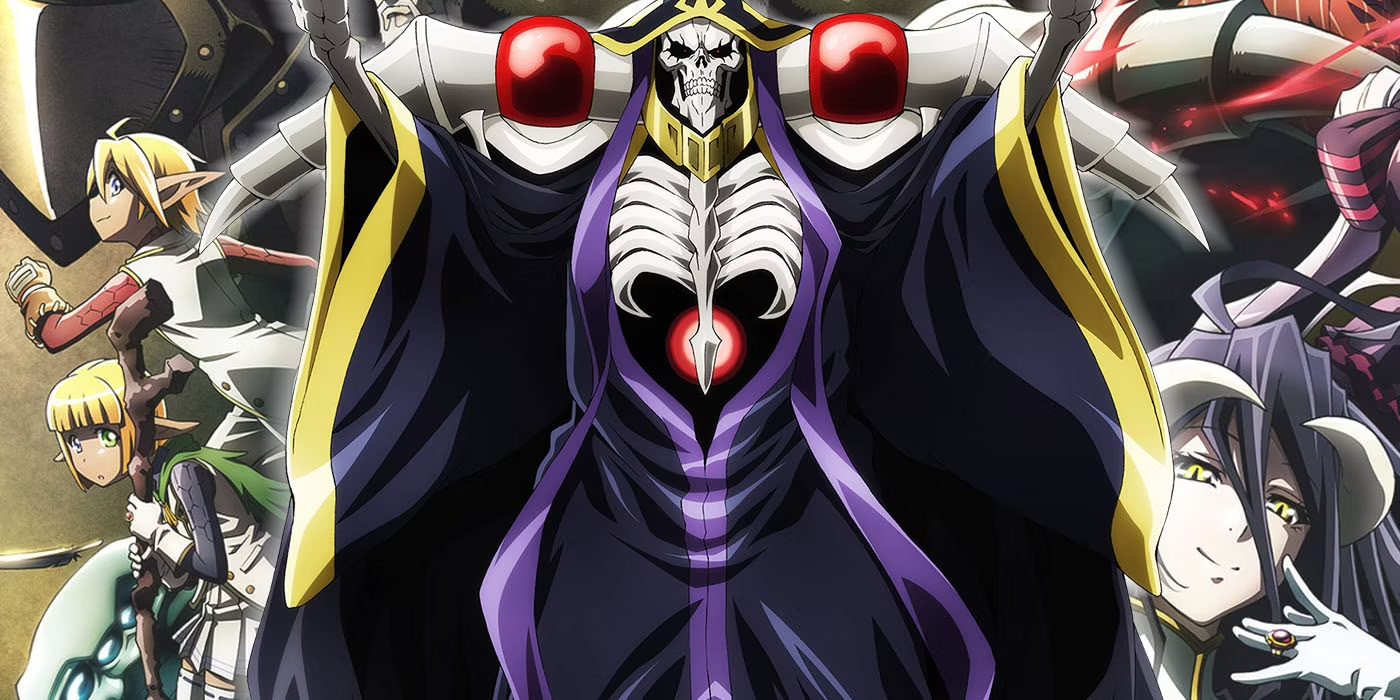
Overlord follows the journey of a leader of an MMO guild who finds himself mysteriously transported to another world, assuming the form of his character, an undead lich named Ains Ooal Gown. Alongside him, the NPCs of his guild also arrive, serving as his loyal subjects. As Ains explores the new world, he discovers parallels to the game he once played.
With ambitions and curiosity driving him, Ains grapples with conflicting desires: to control this new world or to save it. In this aspect, Ains shares similarities with Arc, both having been reborn into another world as undead beings, facing the challenge of adapting to their new bodies and surroundings.
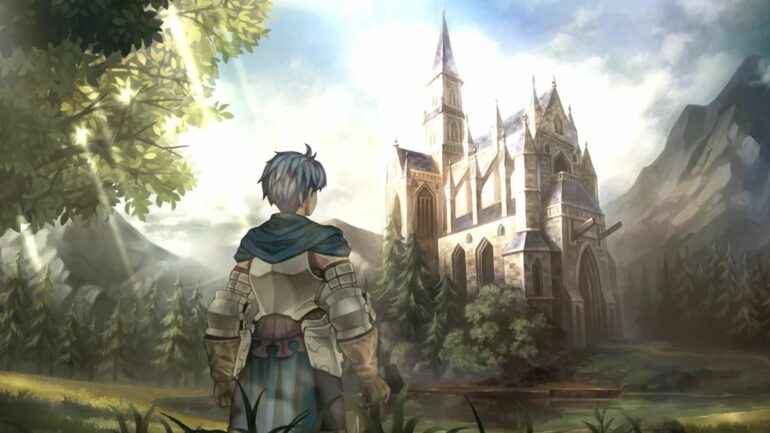
7. How Not To Summon A Demon Lord
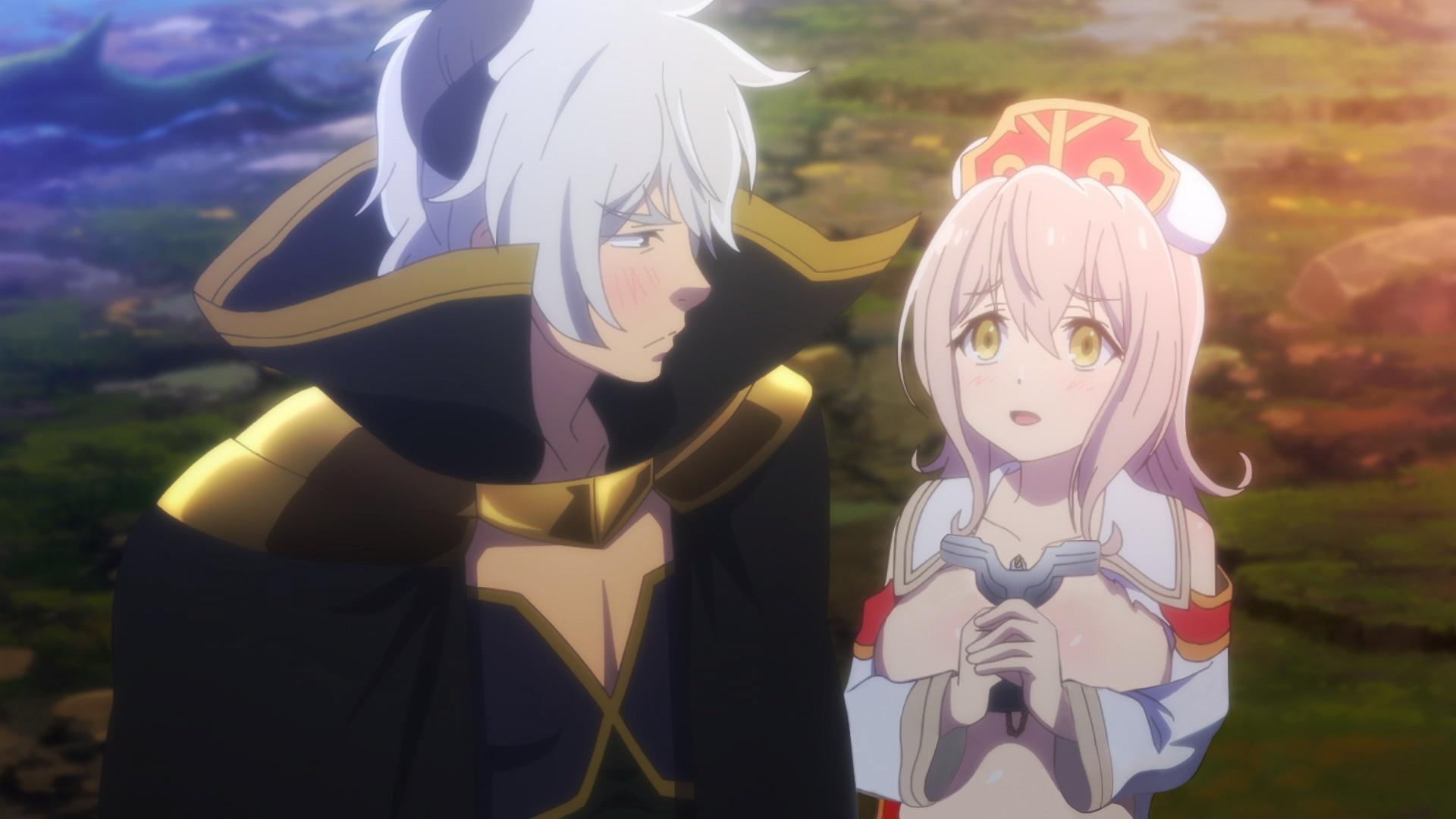
Takumo, a dedicated video game enthusiast, immerses himself in his favorite MMO, embodying the formidable character Diablo. Oblivious to the real world, he effortlessly conquers every virtual opponent in his path. However, his routine is abruptly interrupted when he is summoned to a new world resembling his beloved game, assuming the identity of Diablo.
Joined by two girls who summoned him, Takumo goes on a journey to break the spell binding them together. As the most formidable being in the kingdom, he must navigate this unfamiliar realm and adapt to his newfound life. Similar to Skeleton Knight in Another World, How Not to Summon a Demon Lord features protagonists thrust into fantastical adventures with whimsical undertones.
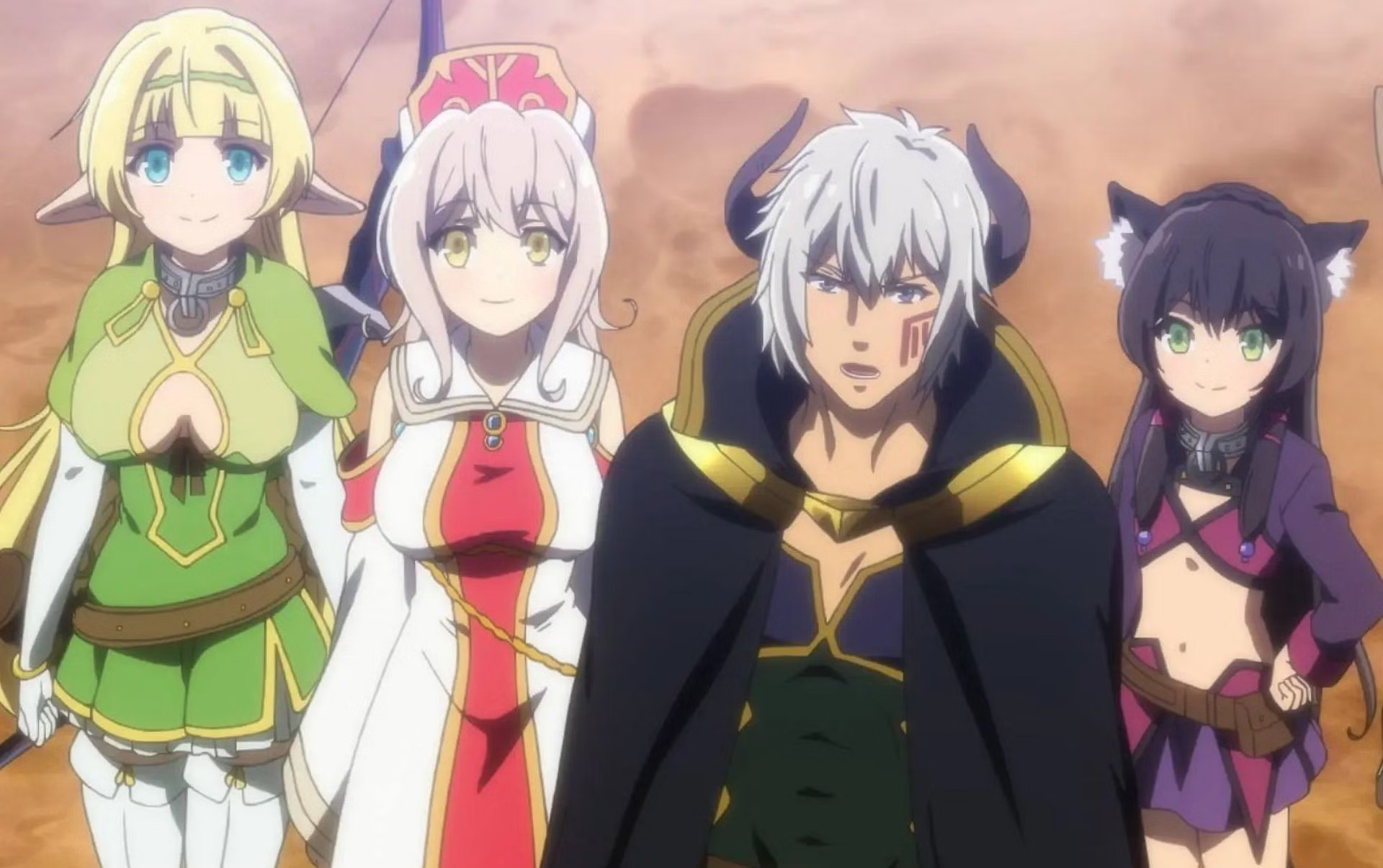
6. Fruit Of Evolution: Before I Knew It, My Life Had It Made
Seiichi, the black sheep of his high school class, endures constant bullying due to his weight and timid nature. However, his life takes an unexpected turn when a god transports his entire class to a fantasy world, urging them to unite and become strong enough to defeat the looming threat of a demon king.
Left to fend for himself on the fringes of civilization, Seiichi’s fortunes change dramatically when he encounters the Fruit of Evolution. This miraculous fruit grants him a newfound physique, power, and charisma. Fans of Skeleton Knight in Another World will appreciate the similar character personalities and themes present in this series.

5. KonoSuba
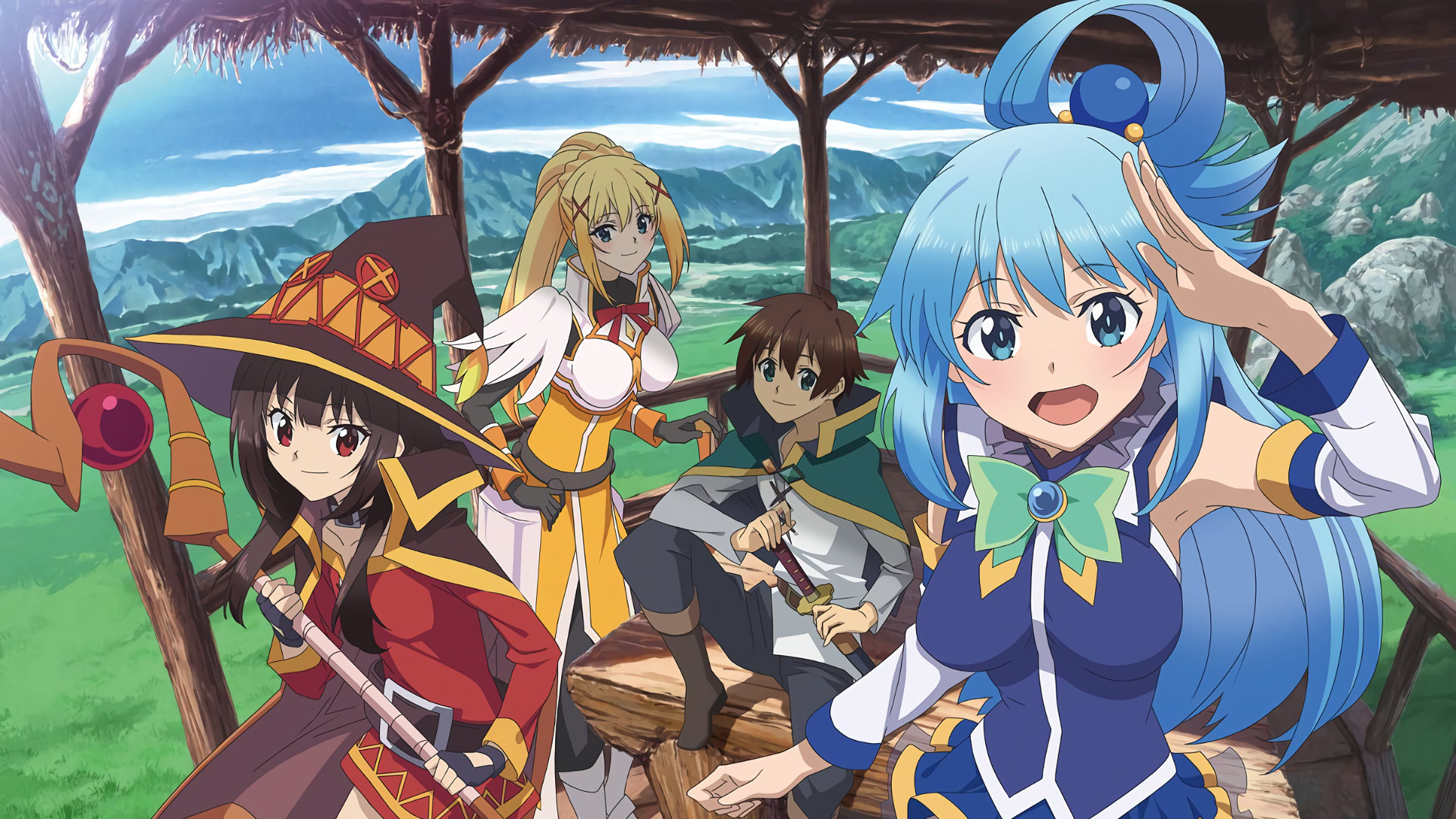
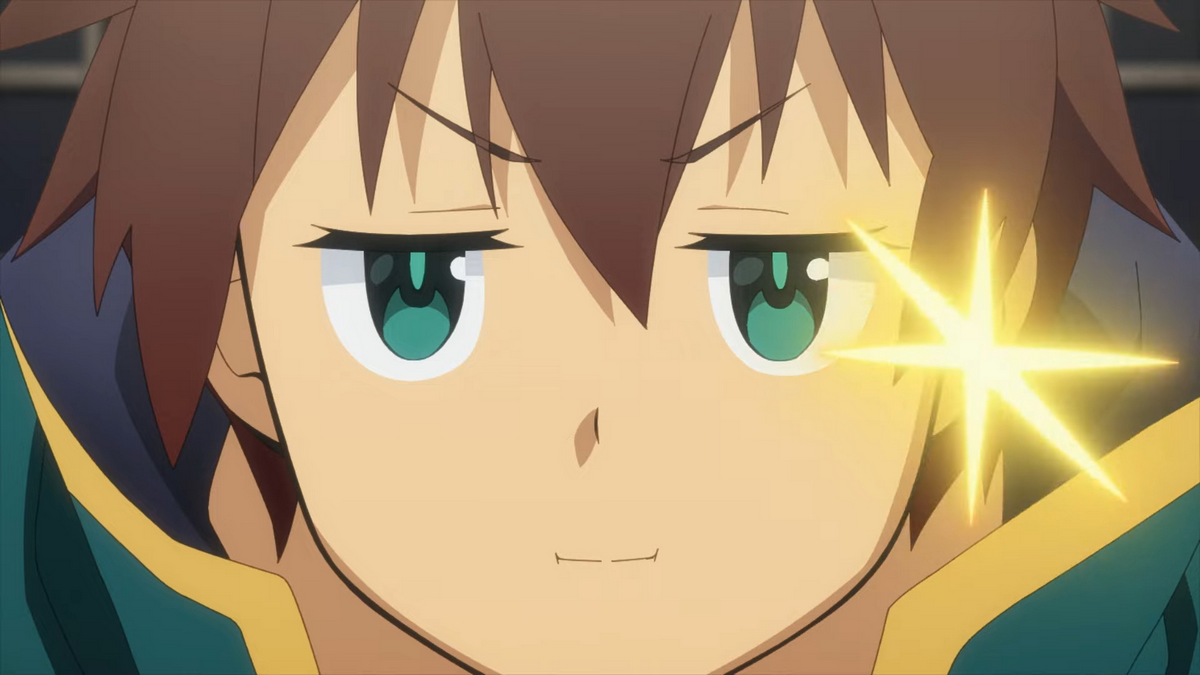
4. Tsukimichi
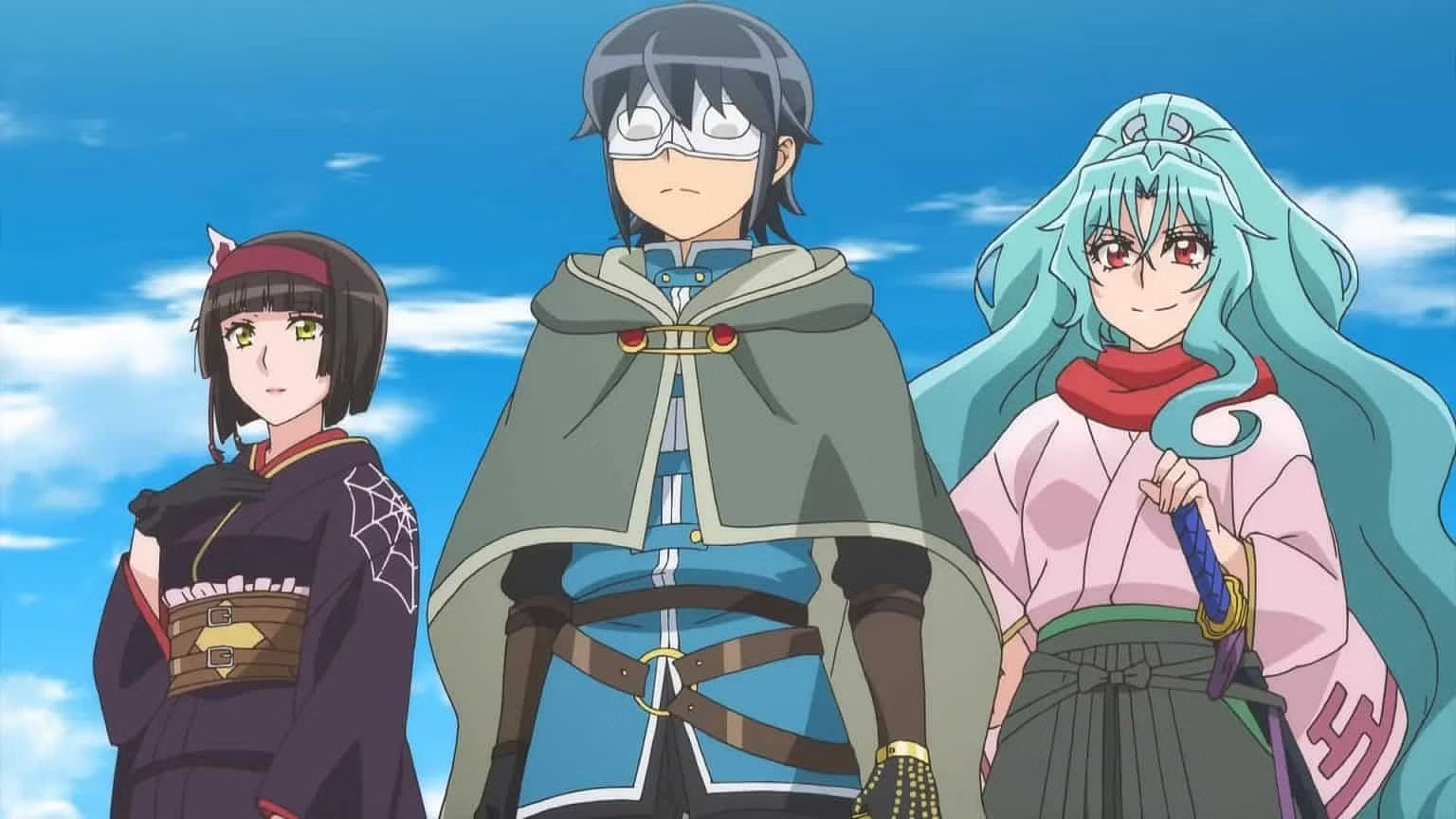
Makoto’s journey to another world in ‘Tsukimichi: Moonlit Fantasy’ wasn’t a smooth transition, and he certainly didn’t have a say in the matter. Born with a promise to become the hero of another world, Makoto was rejected by the goddess and banished to a monster-filled wasteland, forbidden from interacting with humans.
Despite these daunting challenges, Makoto rises to the occasion, becoming a formidable mage and finding a new family among the monsters and demi-humans he encounters. ‘Tsukimichi: Moonlit Fantasy’ skillfully portrays an overpowered protagonist facing realistic challenges, making for an engaging story.
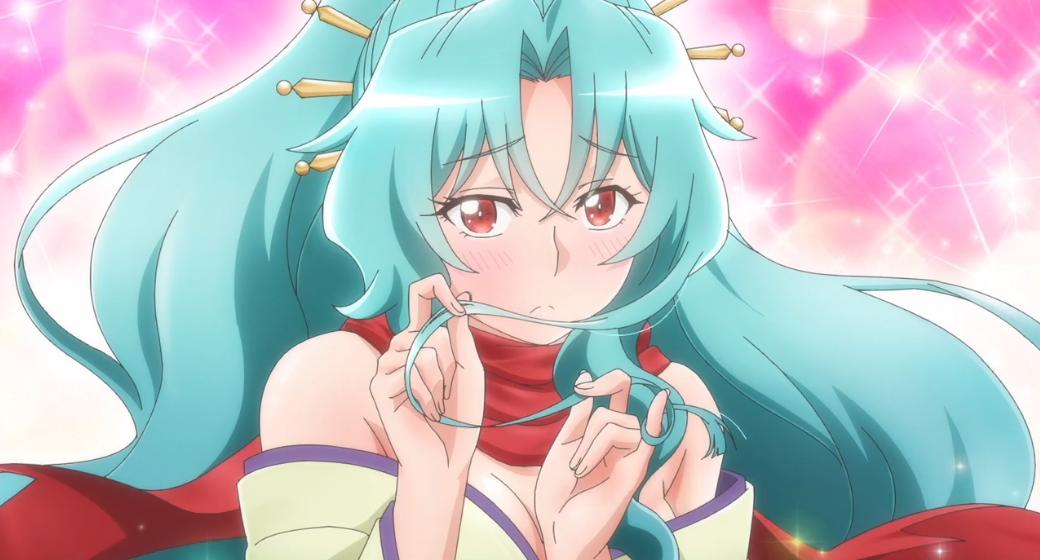
3. My Next Life As A Villainess

There’s a lot of overlap between My Next Life As A Villainess and Doctor Elise. Both follow a girl in a medieval world who used to be less than pleasant but now seeks redemption.
In the isekai otome anime and manga, these titles shine. The article 7 Best Isekai Anime & Manga Set In Otome Games highlights their excellence in this unique subgenre.
However, My Next Life As A Villainess takes a different approach to its characters. Here, the protagonist is cast as the villain in her new world, but it’s not a reflection of her true self. Aware of her character’s doomed fate, she strives to rewrite her story, avoiding villainy at all costs. Her primary goal? Survival—a noble pursuit. Unlike typical isekai tales, this one looks deep into character dynamics. Set within the confines of an Otome game, it bypasses exploration of new worlds or encounters with fantastical races.
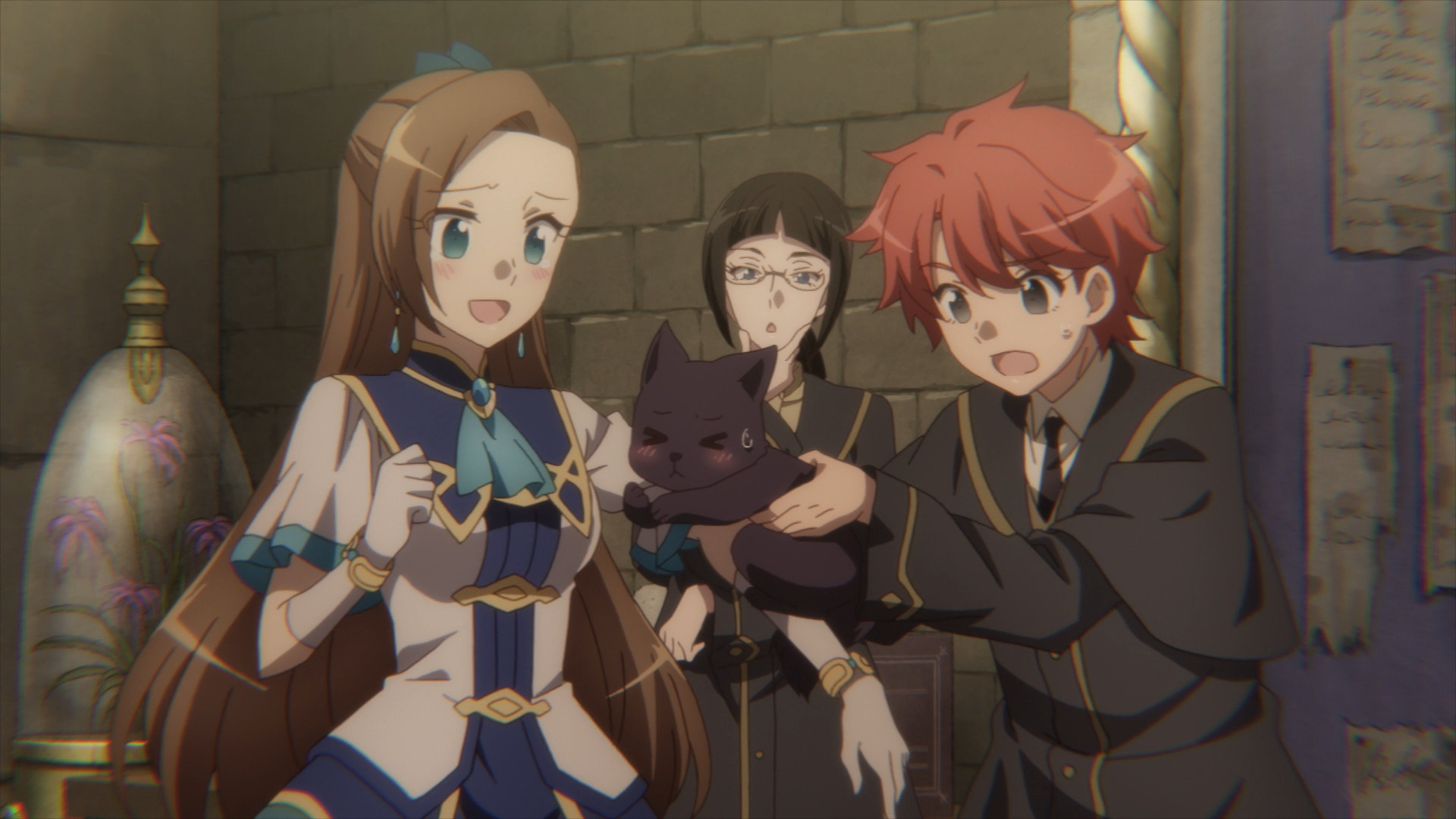
2. Saga of Tanya the Evil
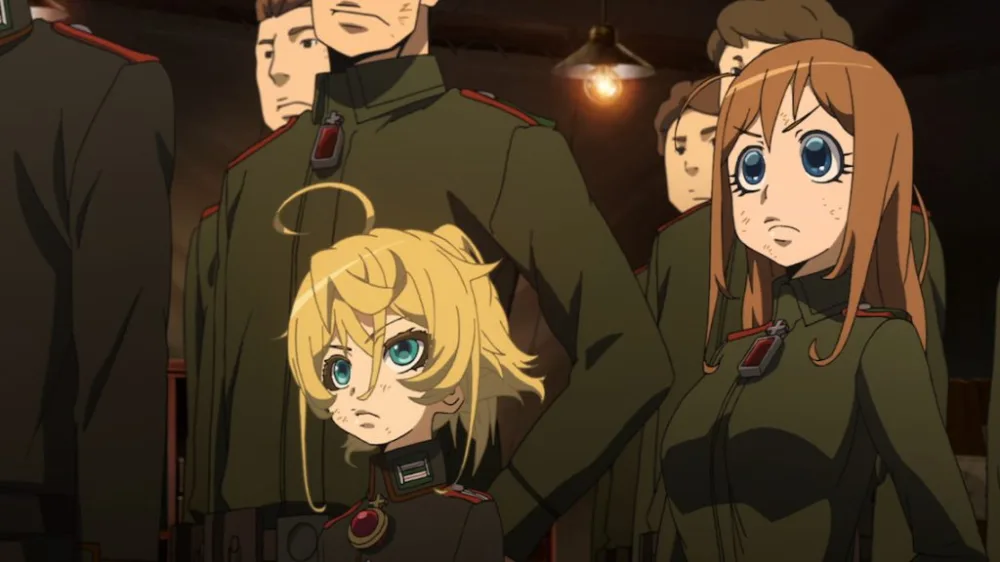
Saga of Tanya the Evil presents a unique twist on the concept of monsters. Despite being set in a world filled with conflict and turmoil, the monsters here are all too human, devoid of any beastly forms. The central character, Tanya Degurechaff, undergoes a drastic transformation from a salaryman to a key figure in this new .
The setting mirrors Earth in its dingy, war-torn state, with only a hint of fantasy through the introduction of magic. Tanya’s journey unfolds against this backdrop of darkness and strife. As she climbs the ranks in the military, driven by her desire to triumph over the enigmatic entity known only as X, she finds herself hurtling towards what seems like an ominous fate in this unfamiliar world.
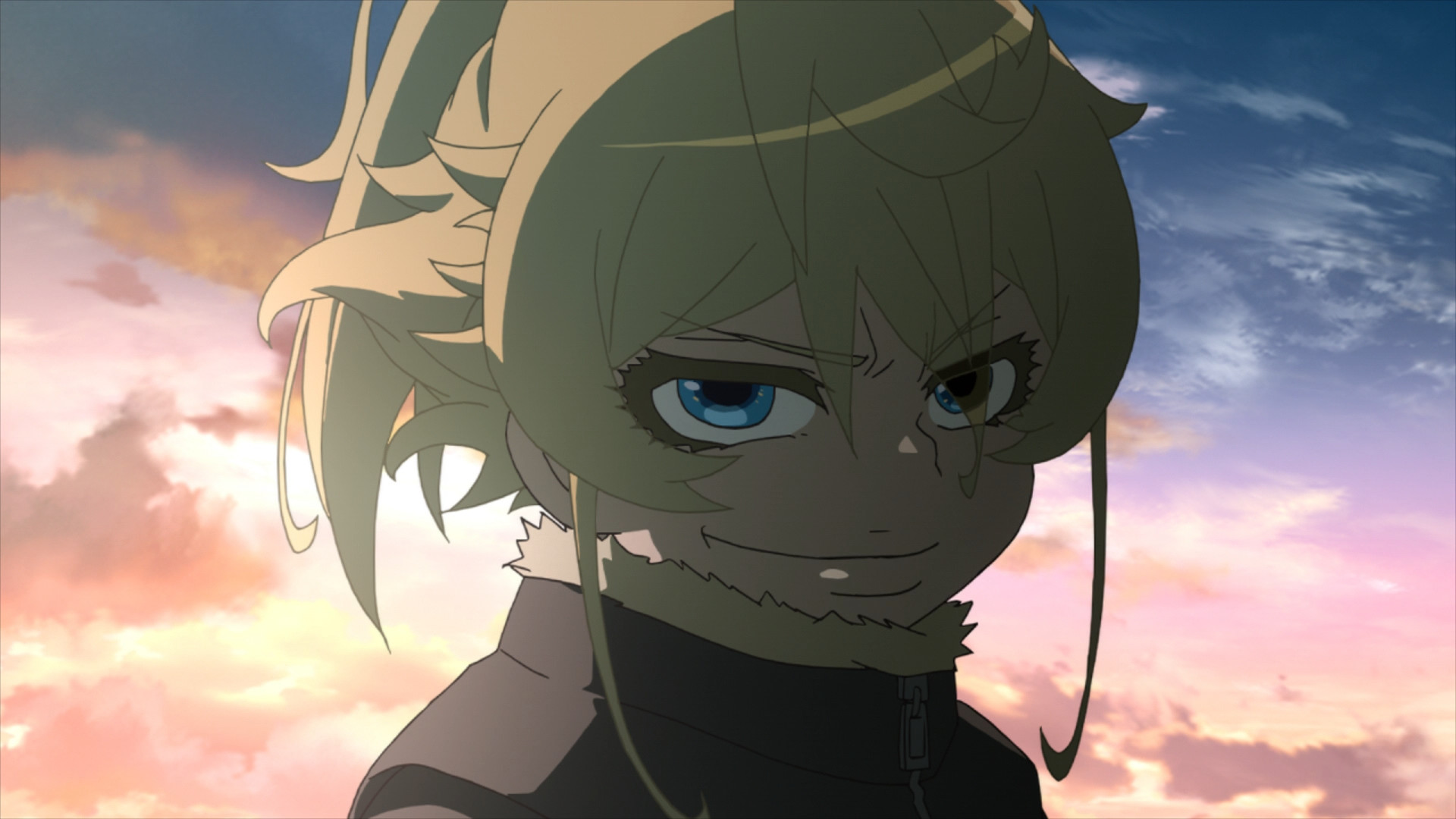
1. Ya Boy Kongming
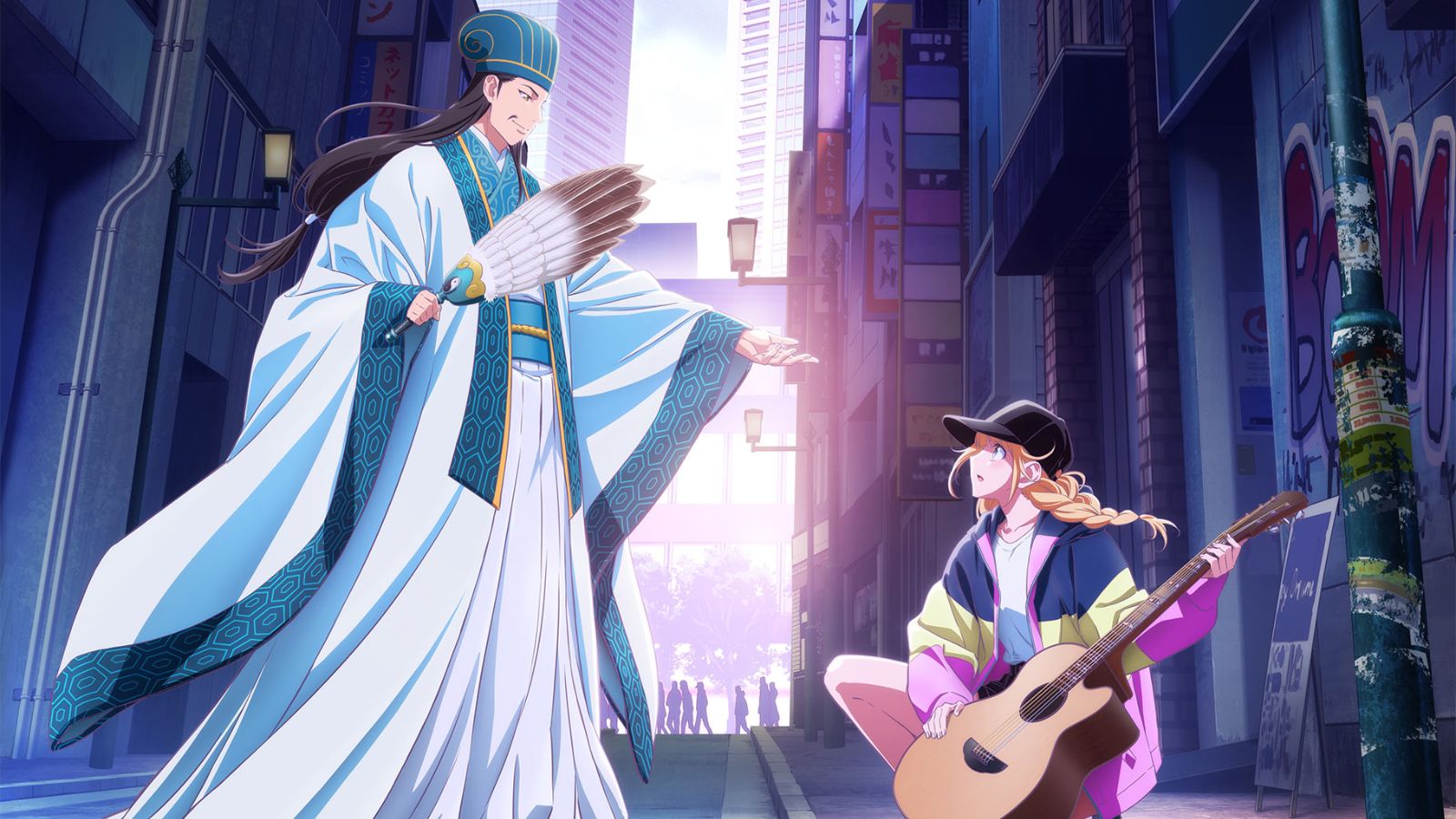
Ya Boy Kongming presents an interesting case within the isekai genre. While it features a Chinese general from the second century AD who finds himself transported to modern-day Tokyo after his death, it still adheres to many of the genre’s conventions.
Despite the unconventional premise, the series ticks all the boxes for an isekai tale, particularly with the introduction of an alien world for the character to navigate.
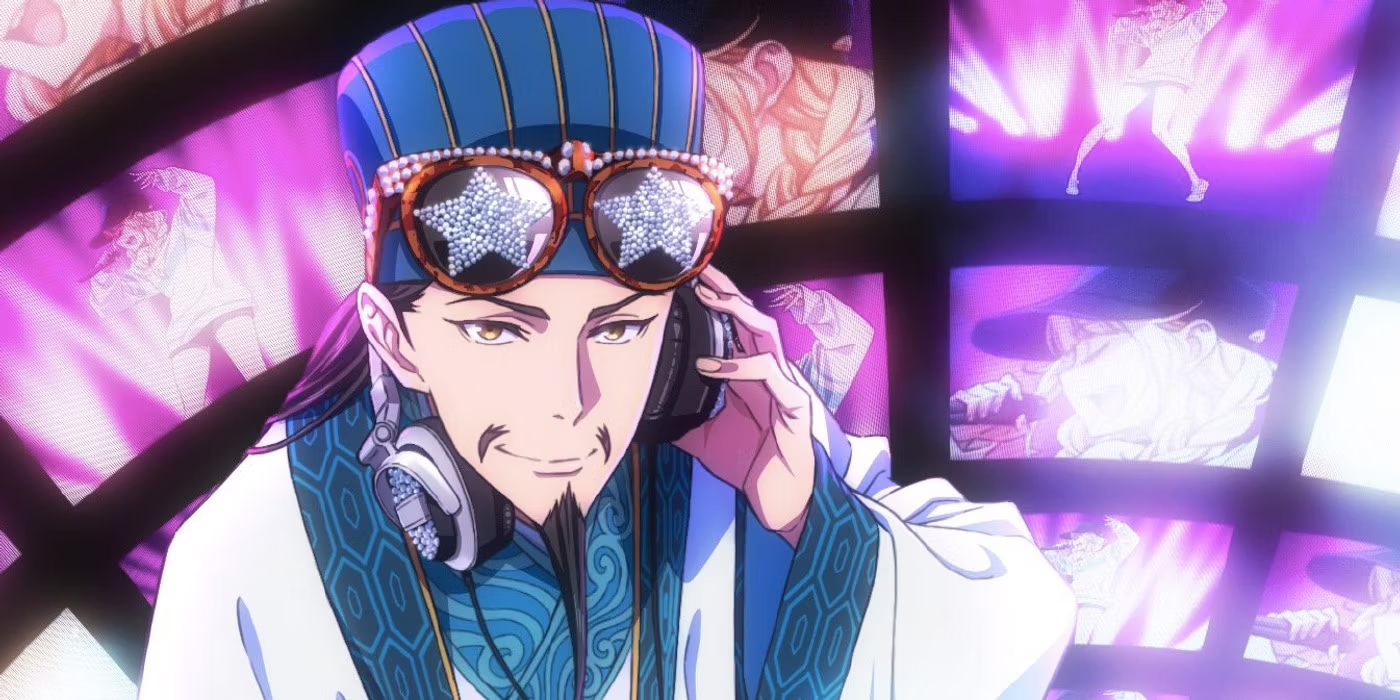
However, unlike traditional isekai stories with fantastical elements like magic or mythical creatures, Ya Boy Kongming is firmly rooted in the urban of Tokyo.
Here, the protagonist, Kongming, utilizes his shrewdness and expertise to assist Eiko in her ascent up the entertainment industry ladder. While the show initially flew under the radar due to limited availability on mainstream streaming platforms, it has garnered acclaim for its endearing characters and catchy musical numbers.

